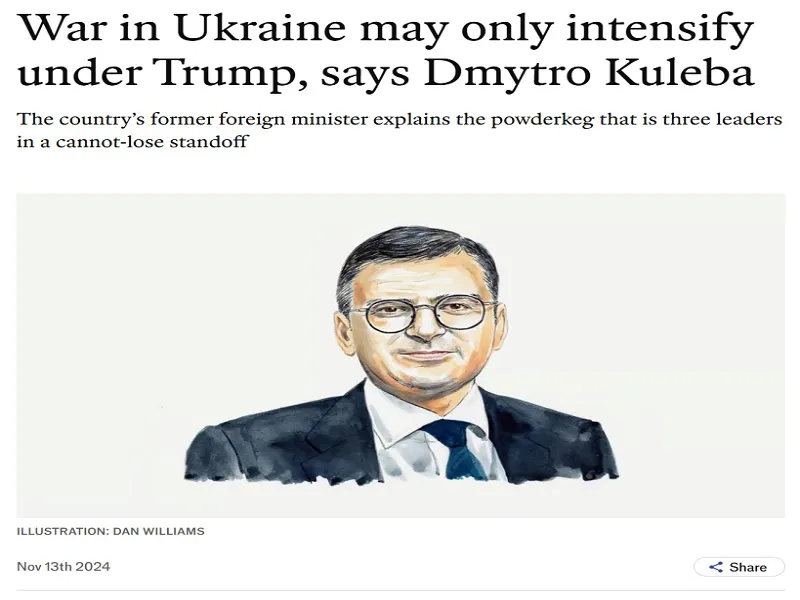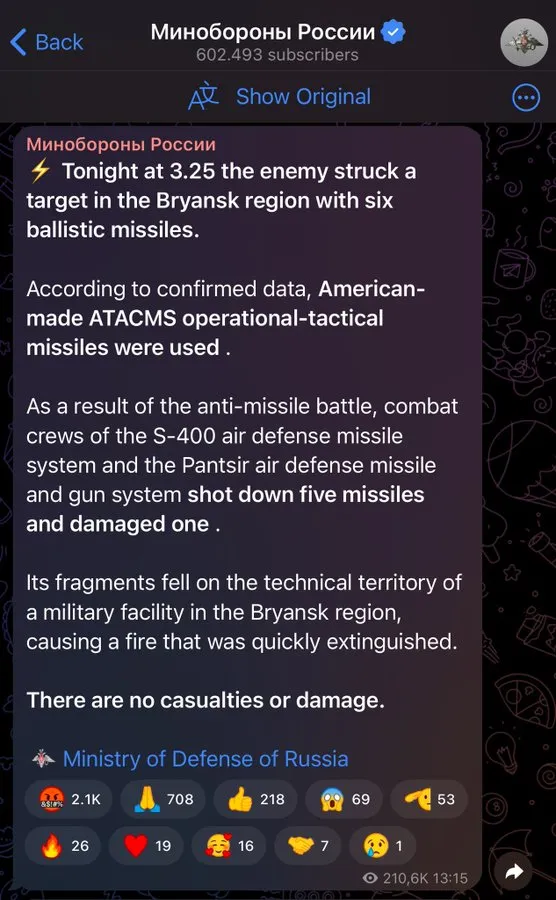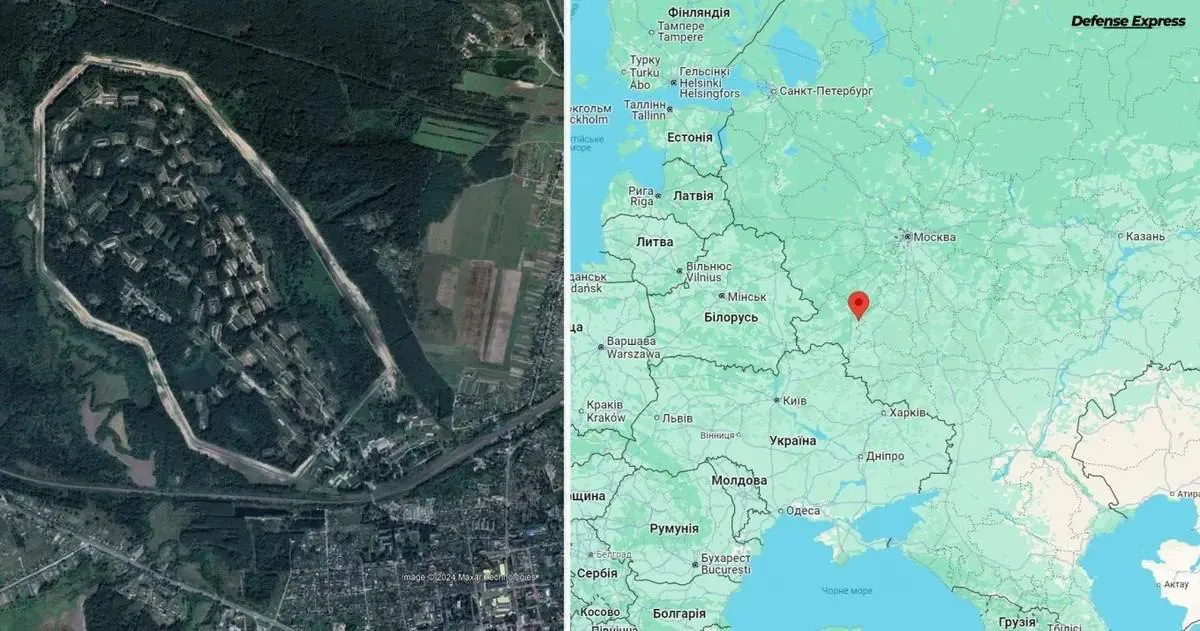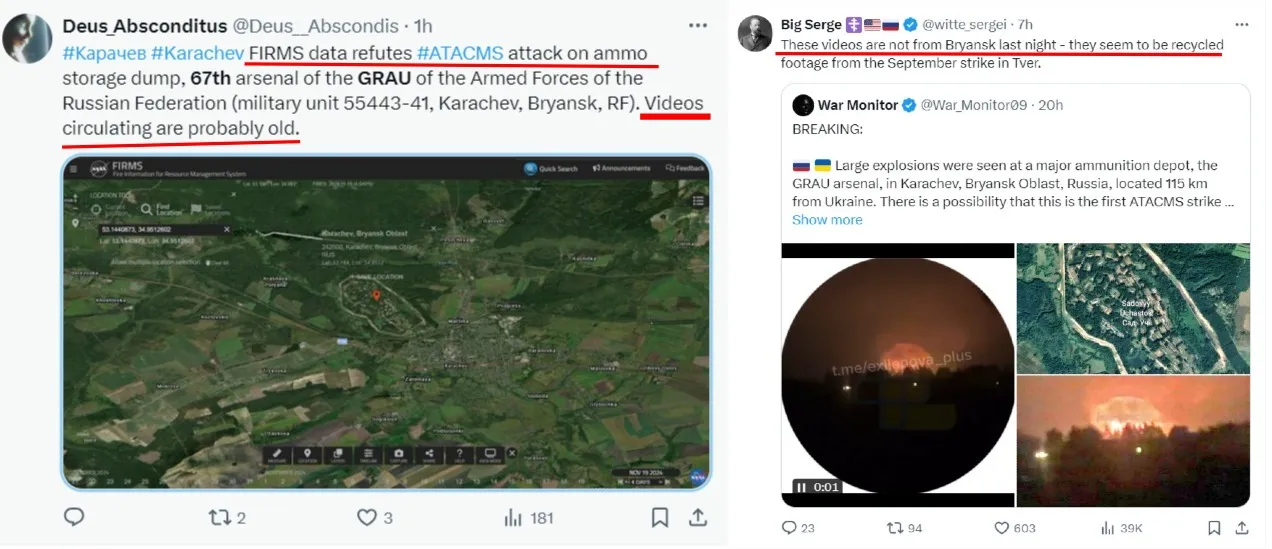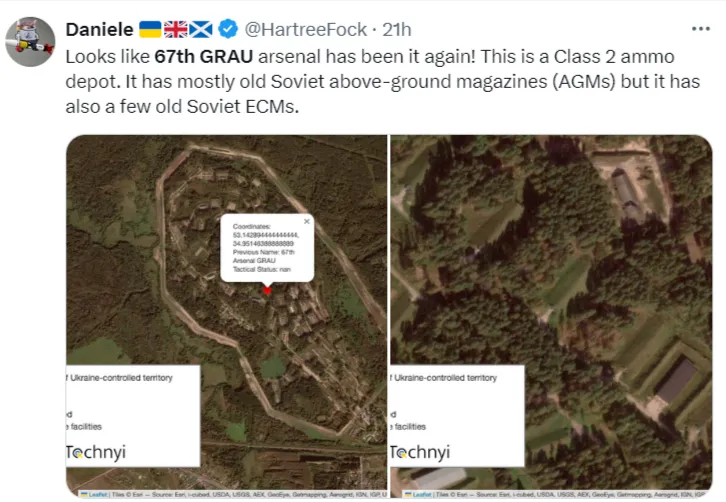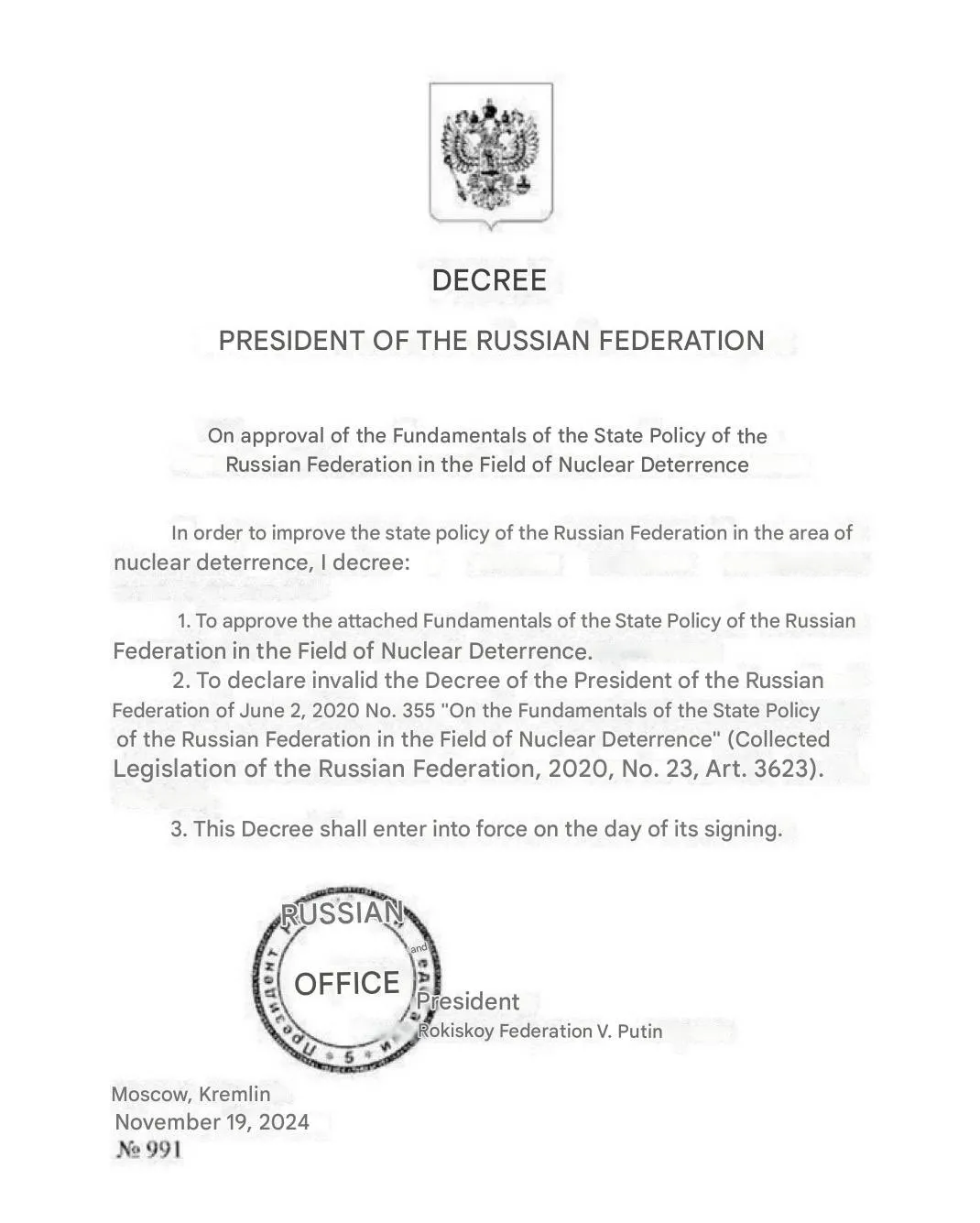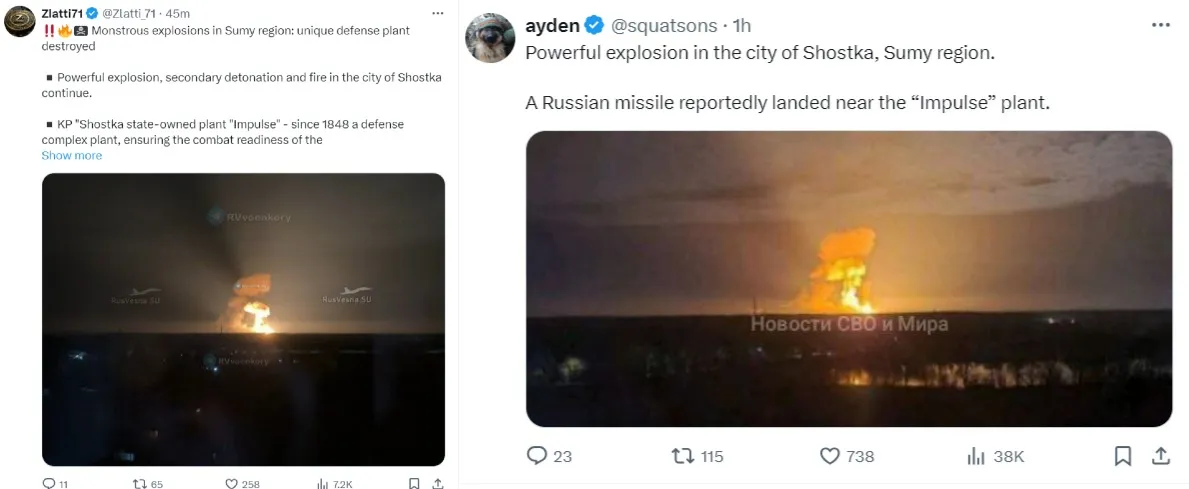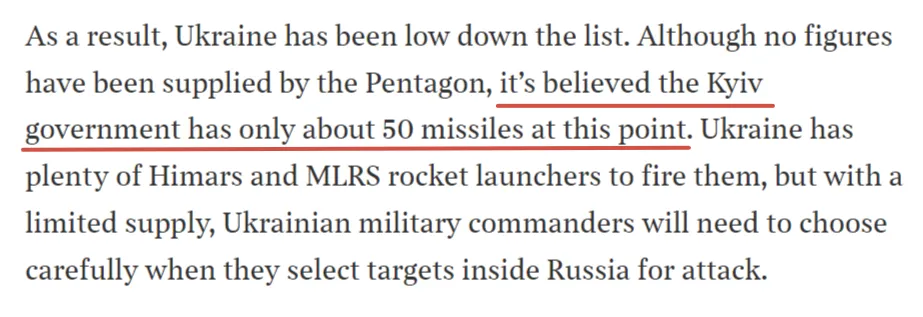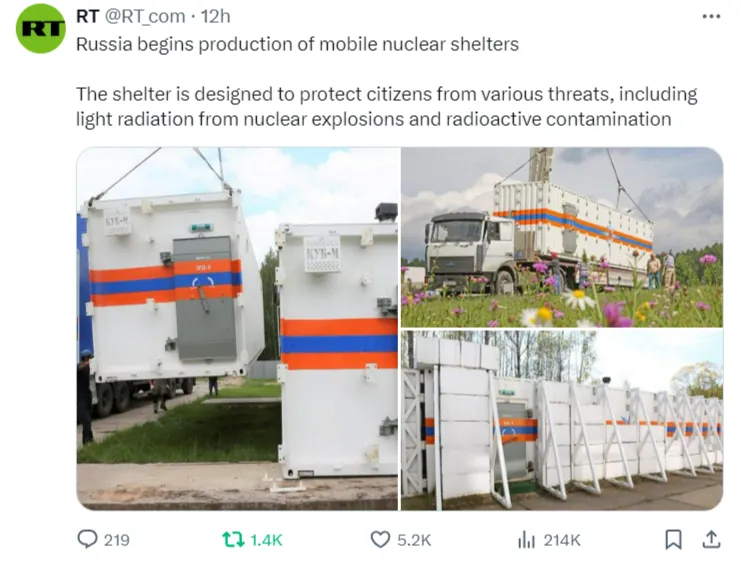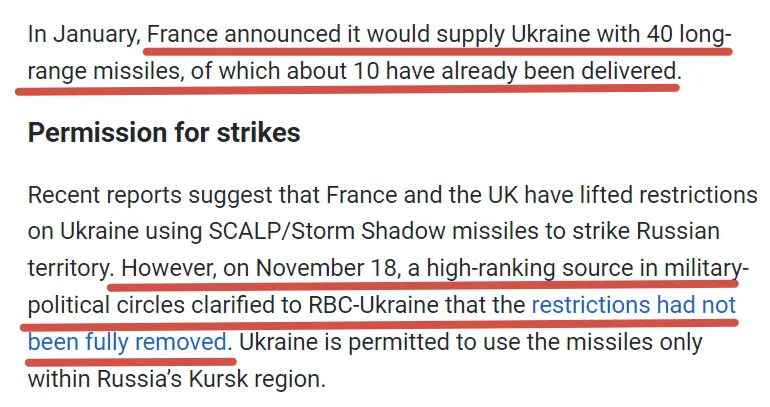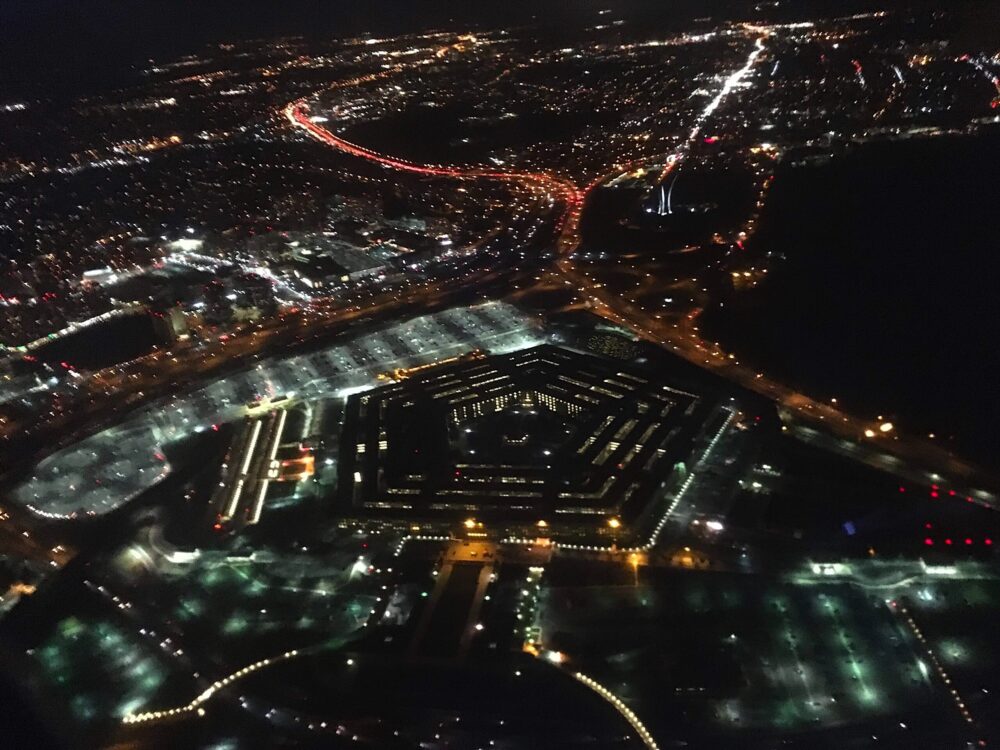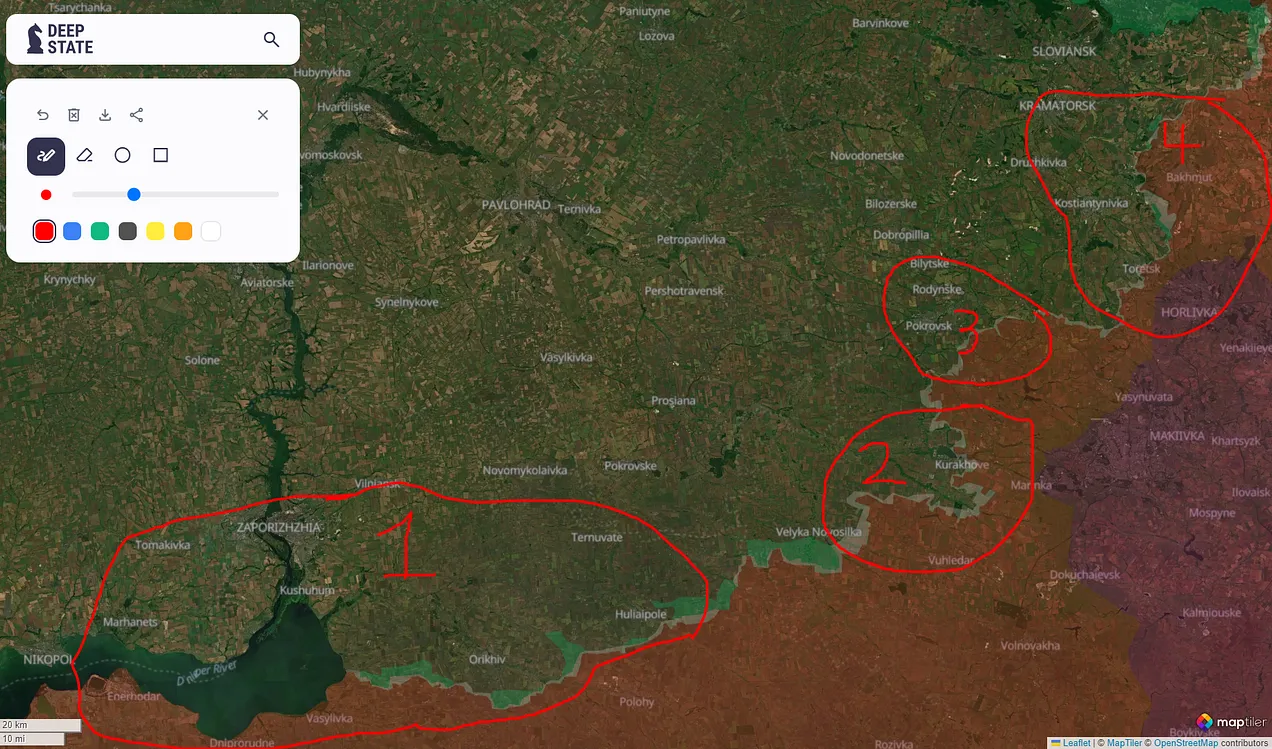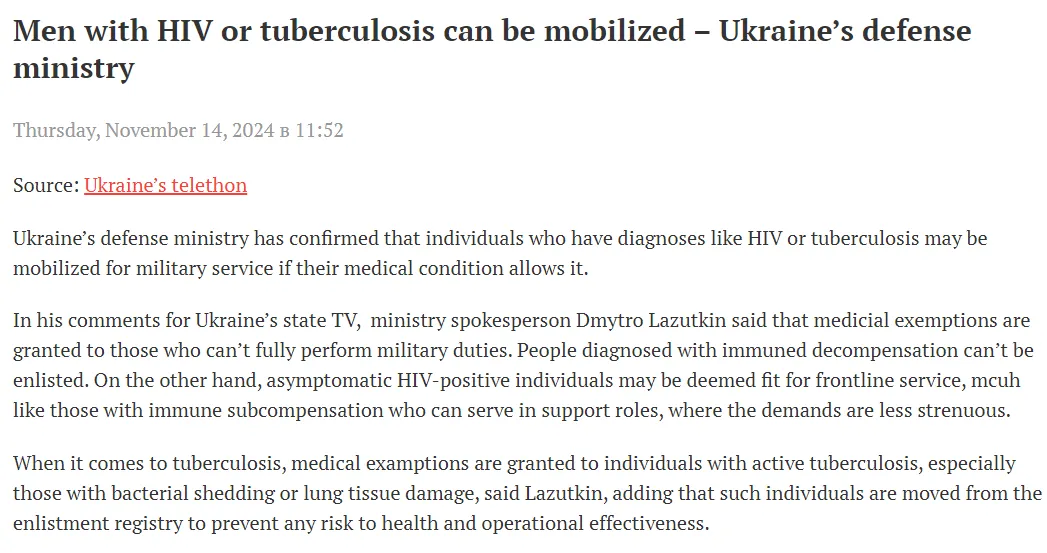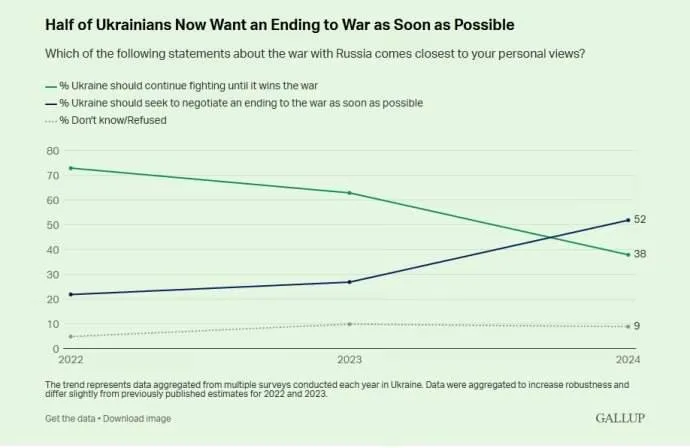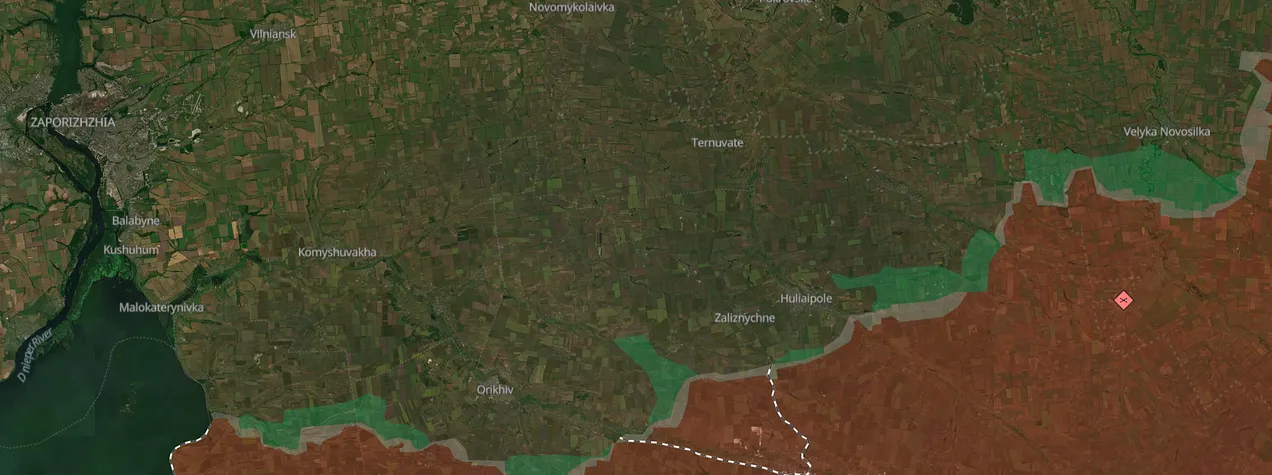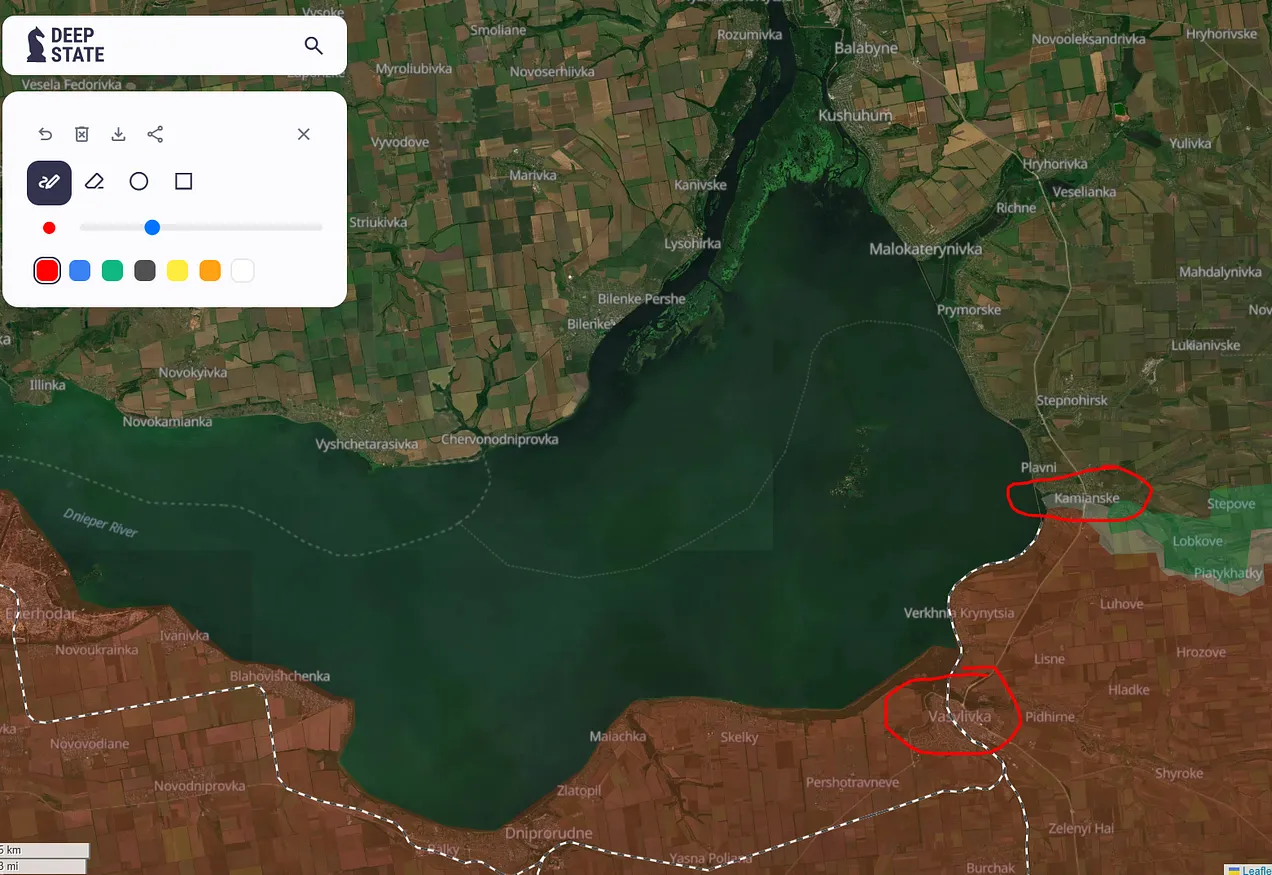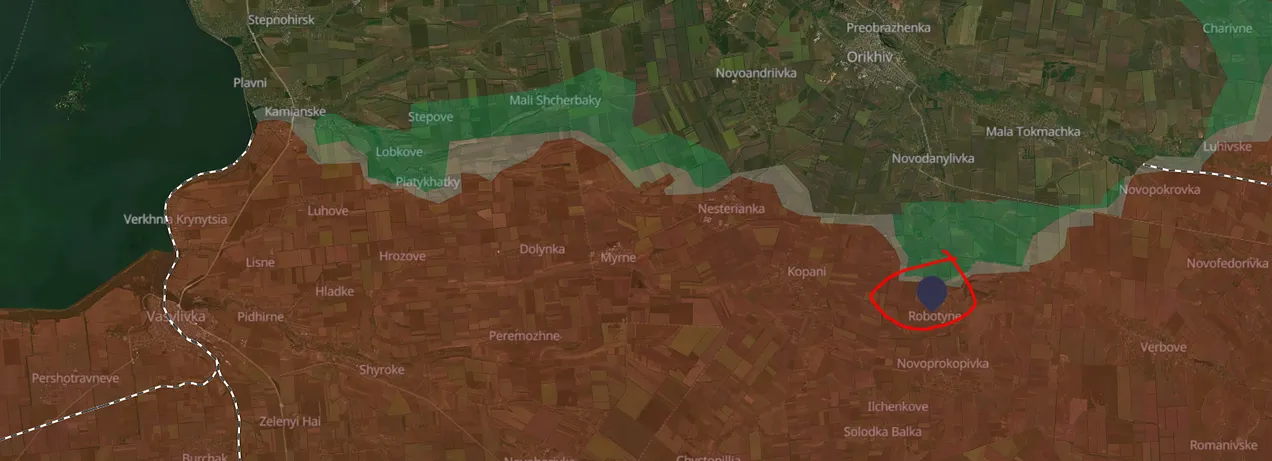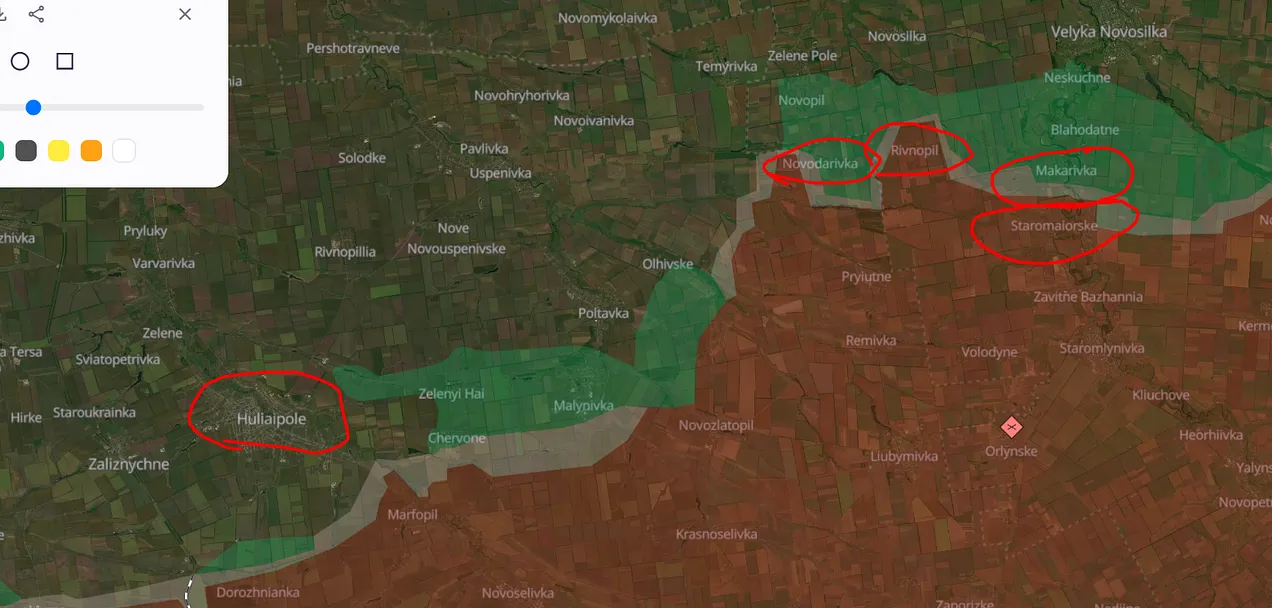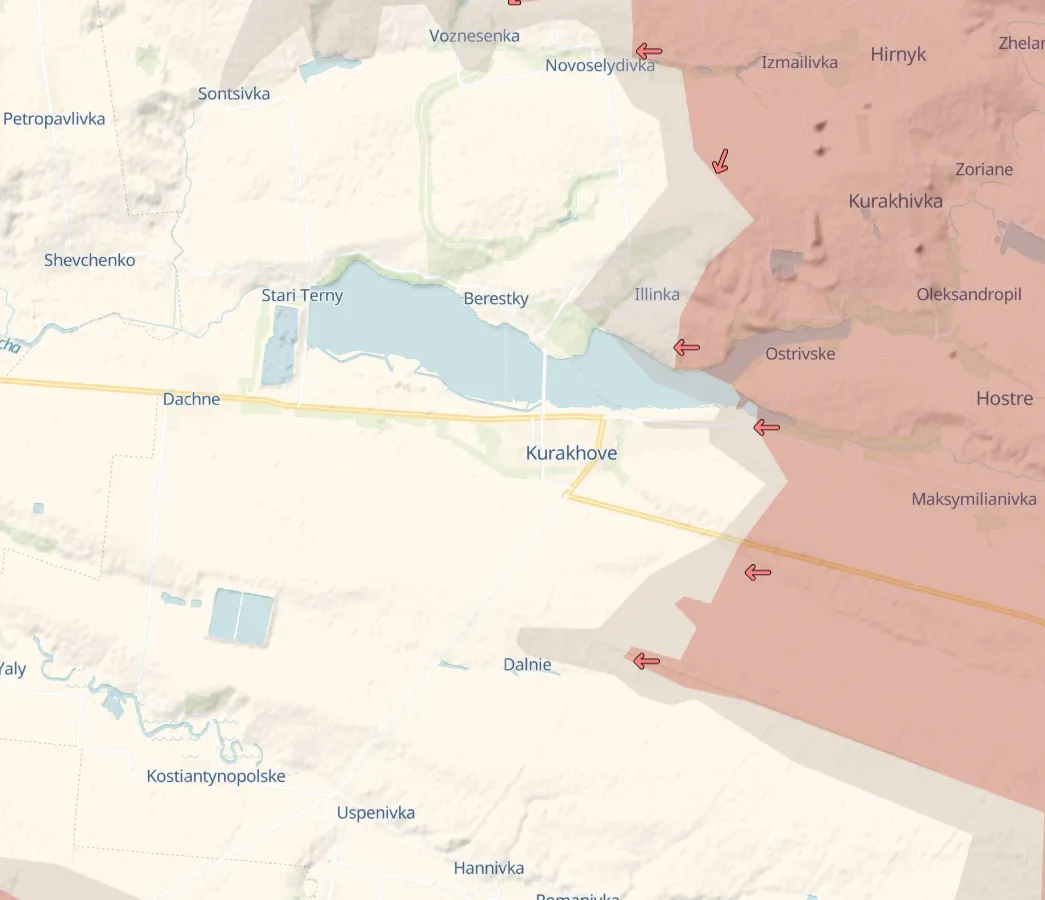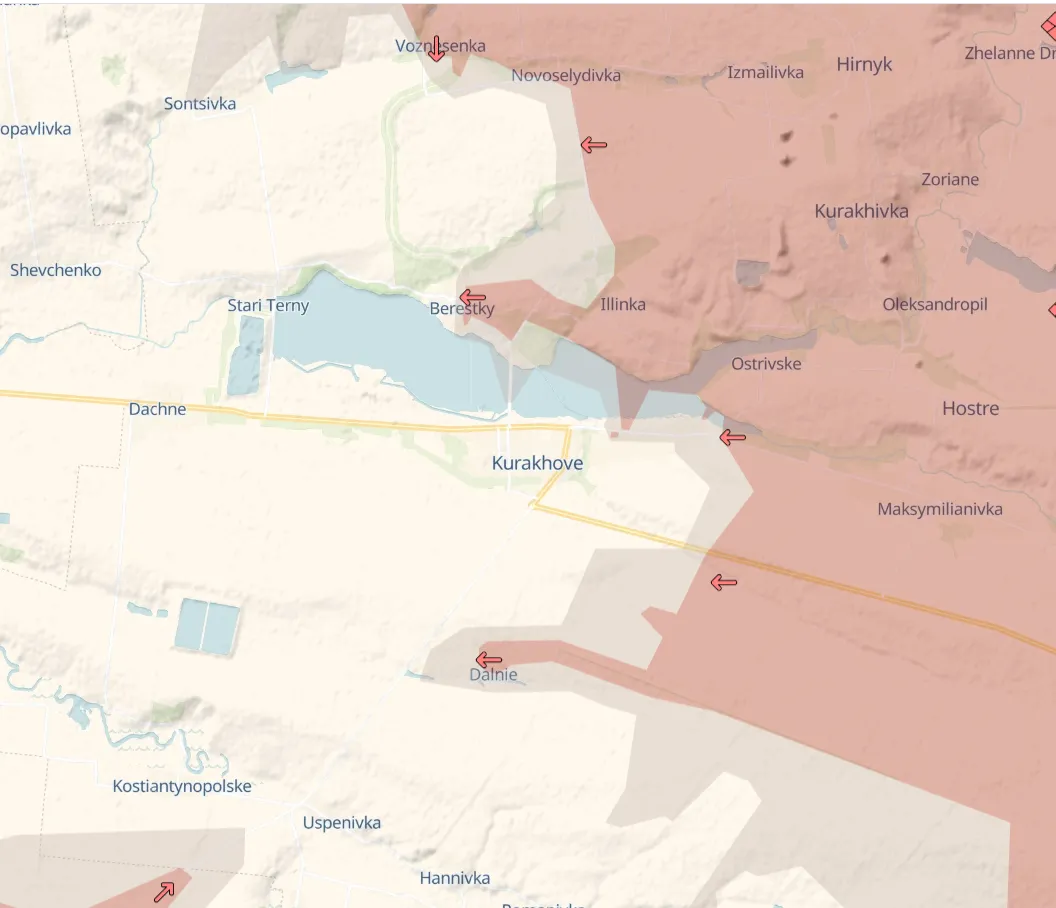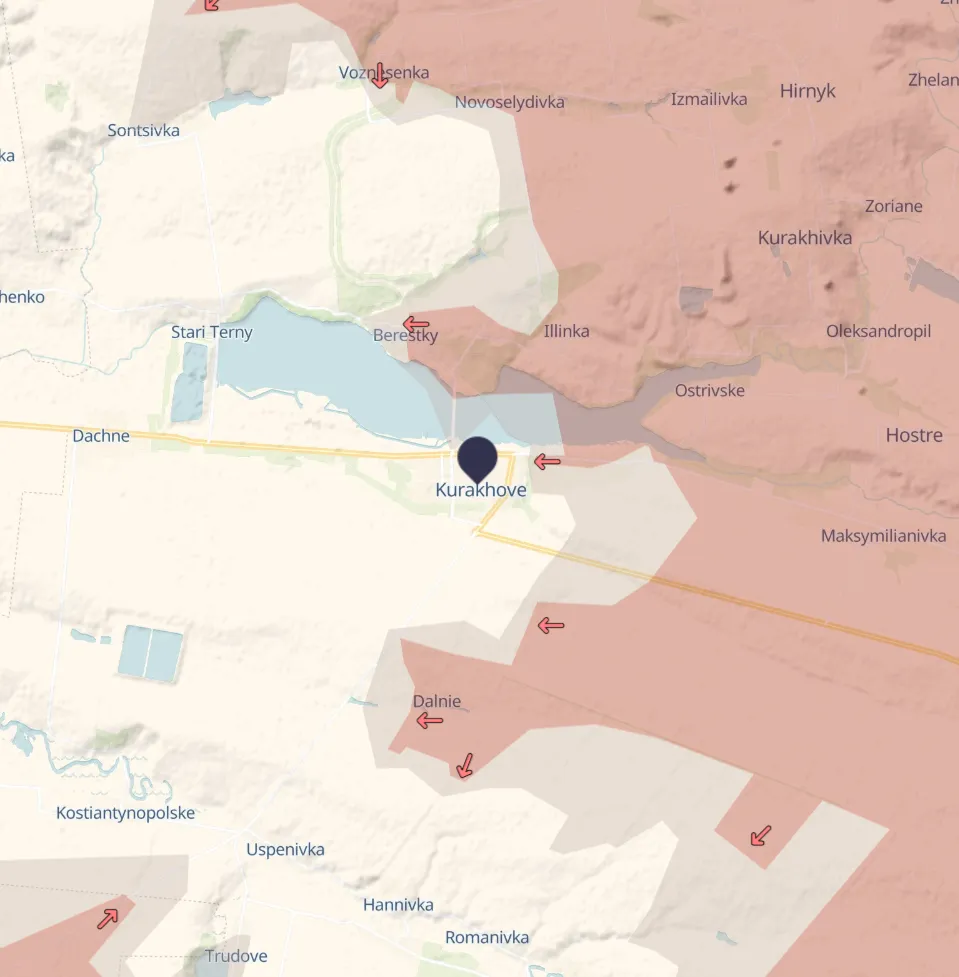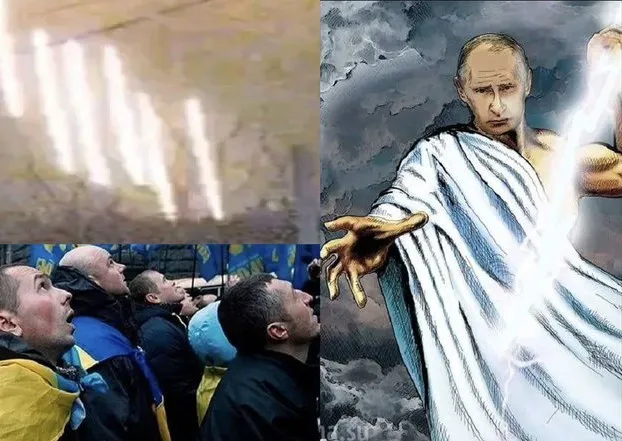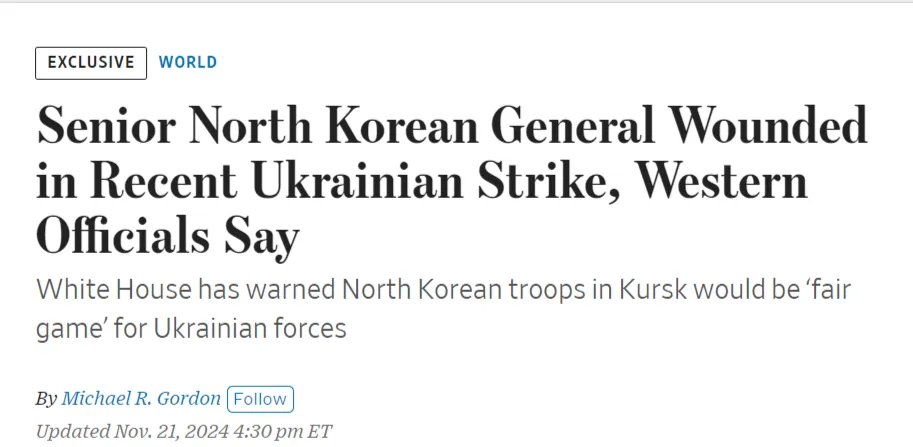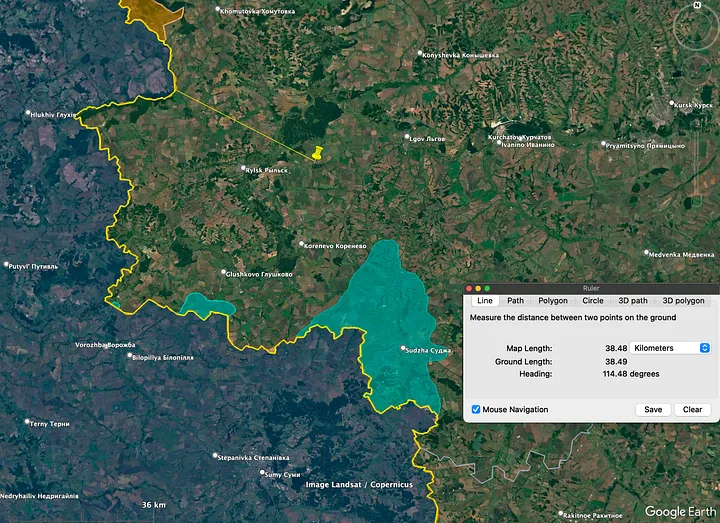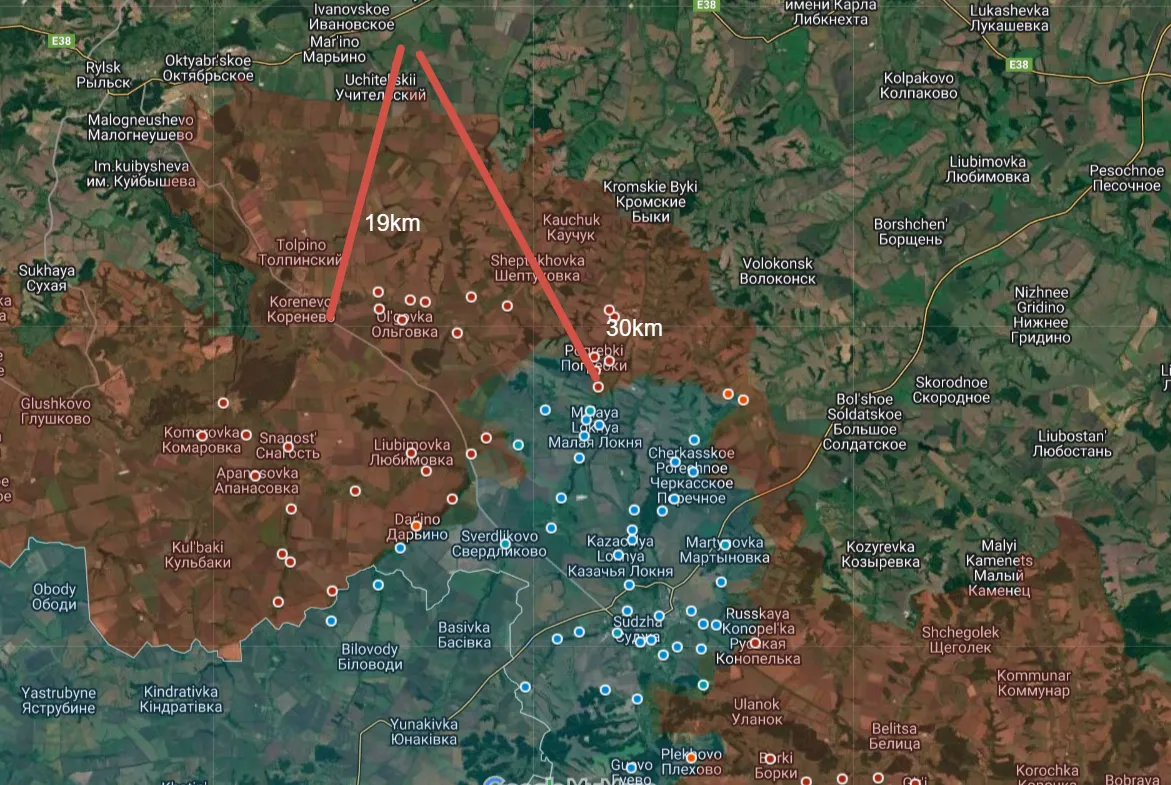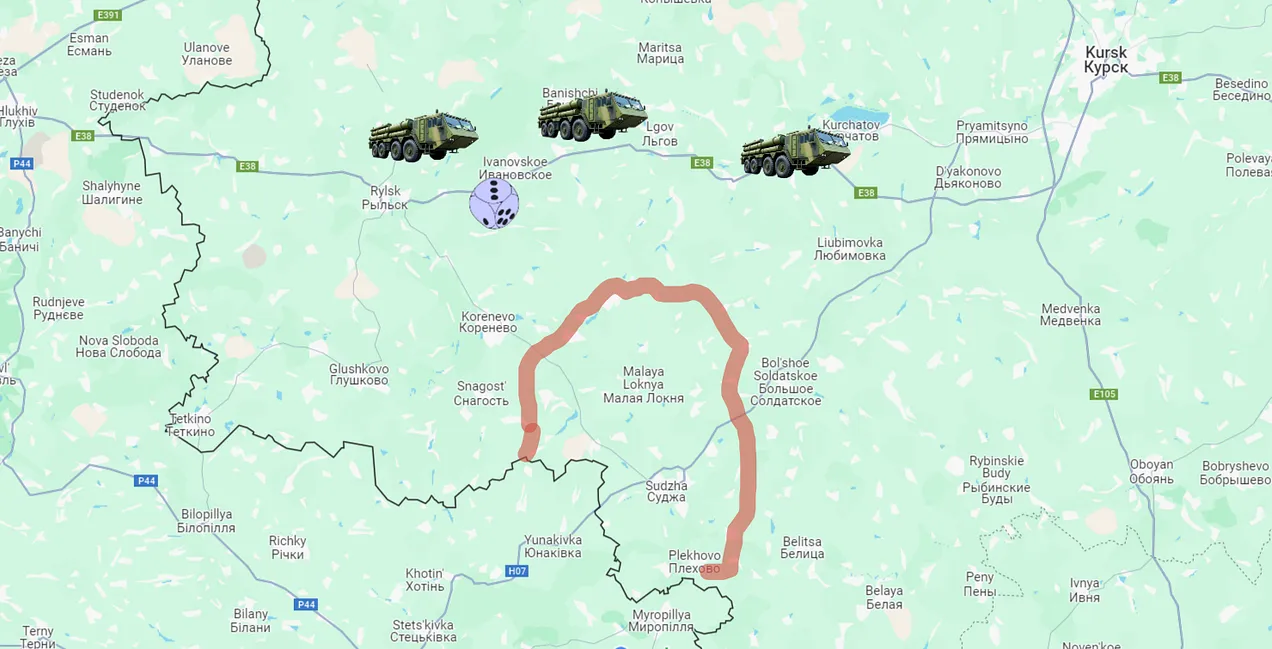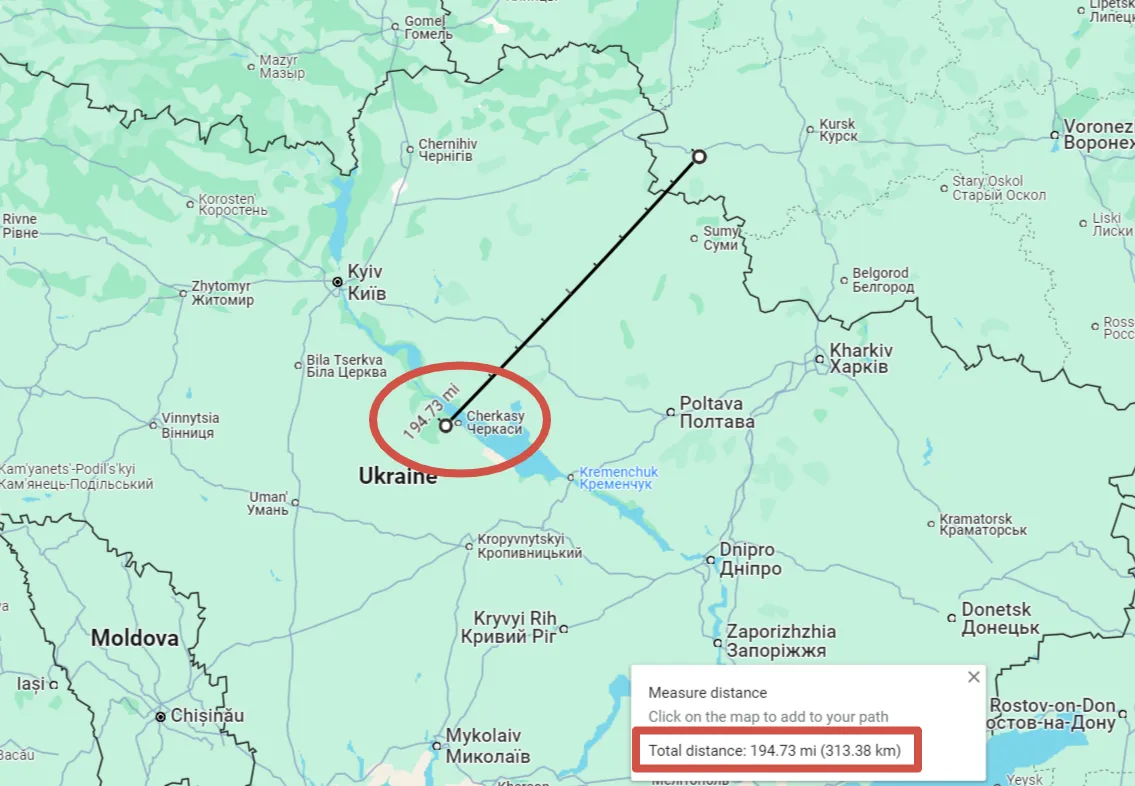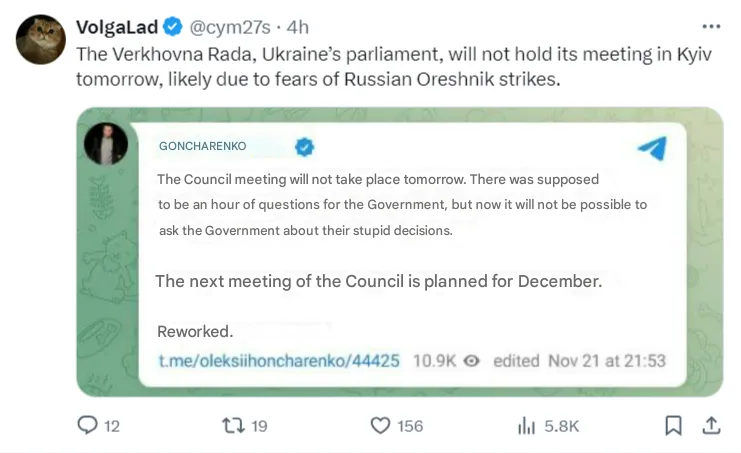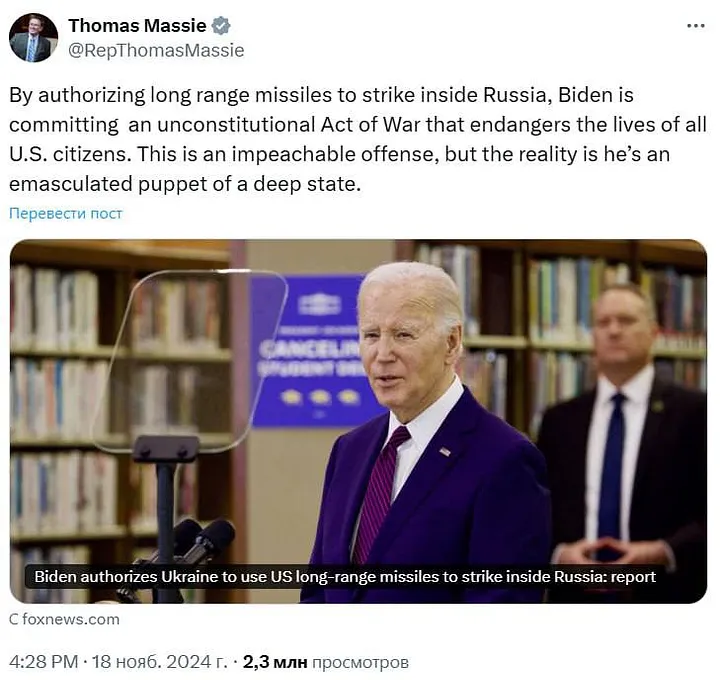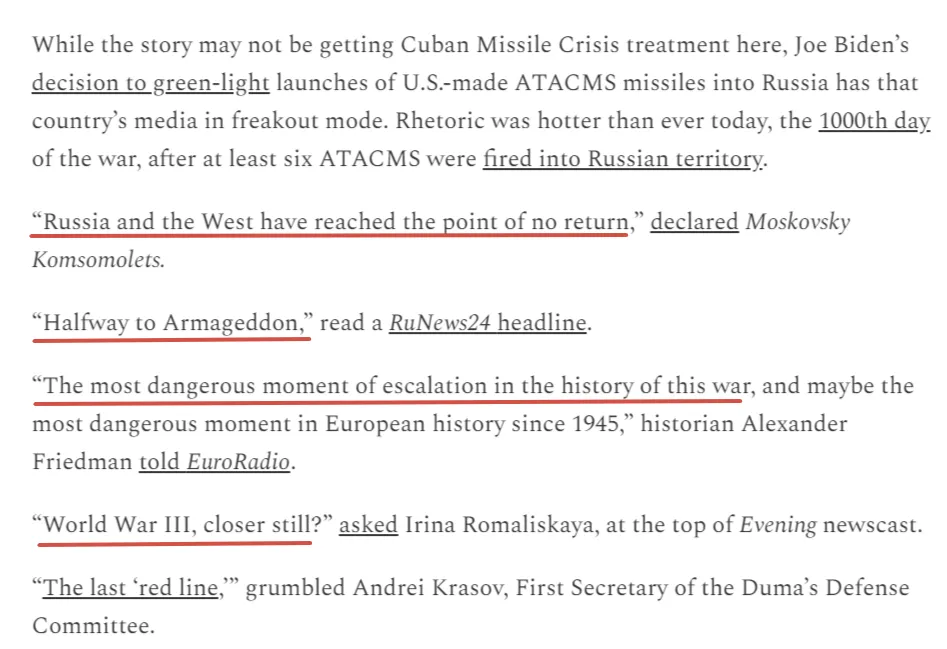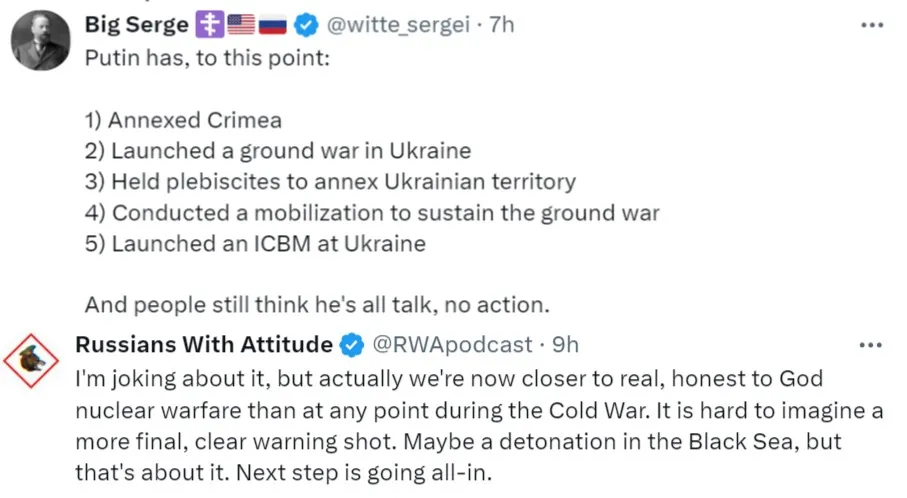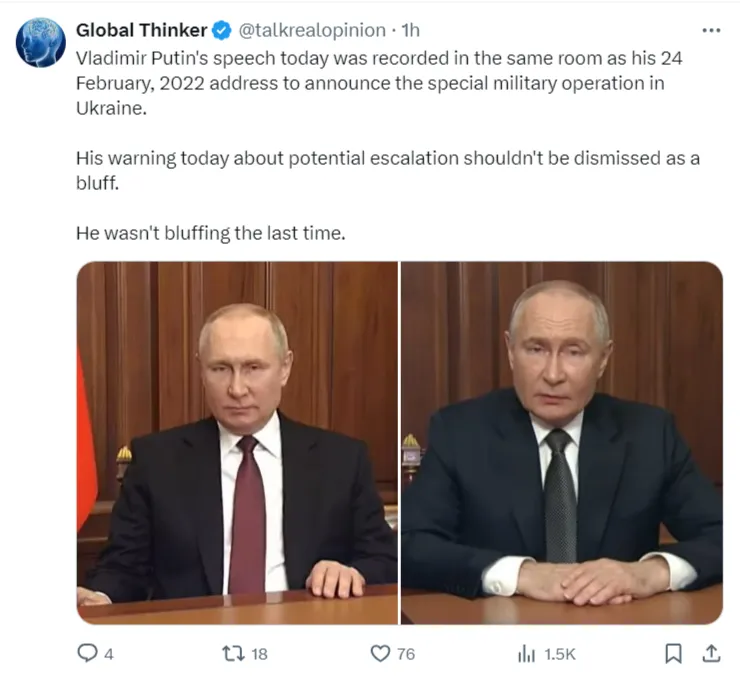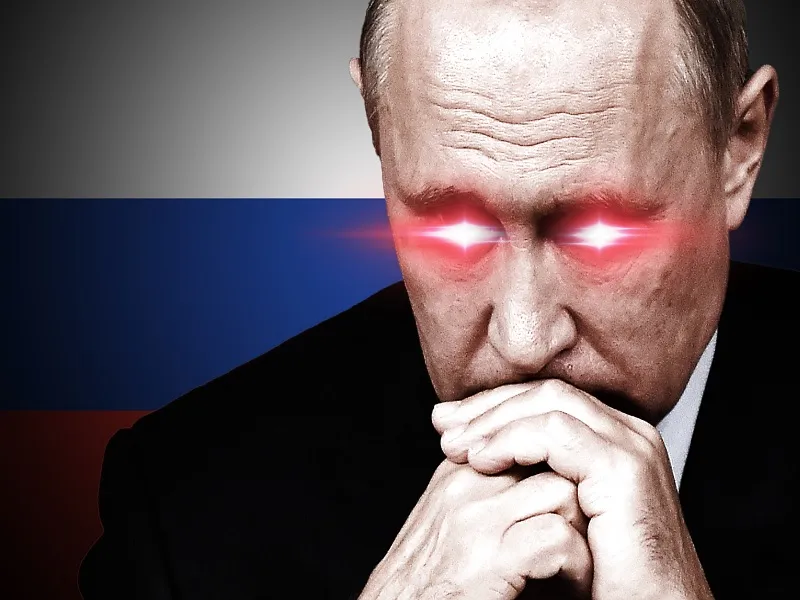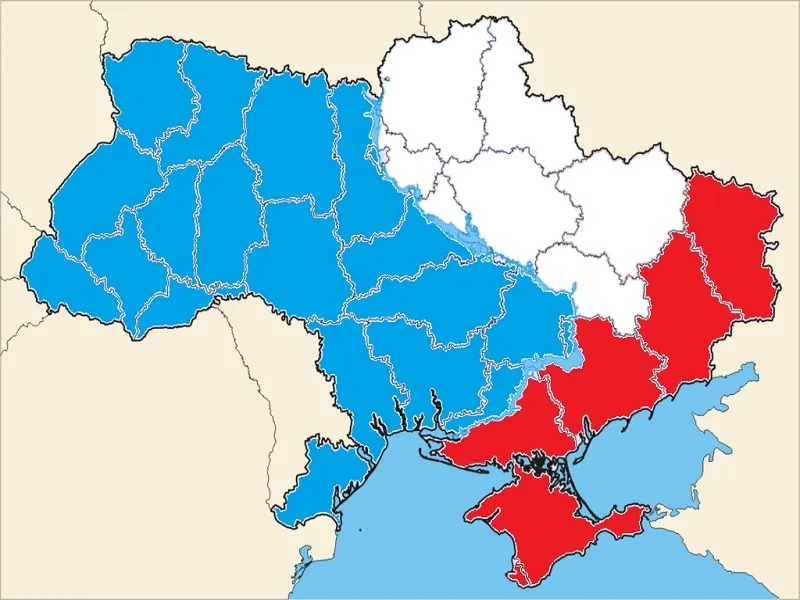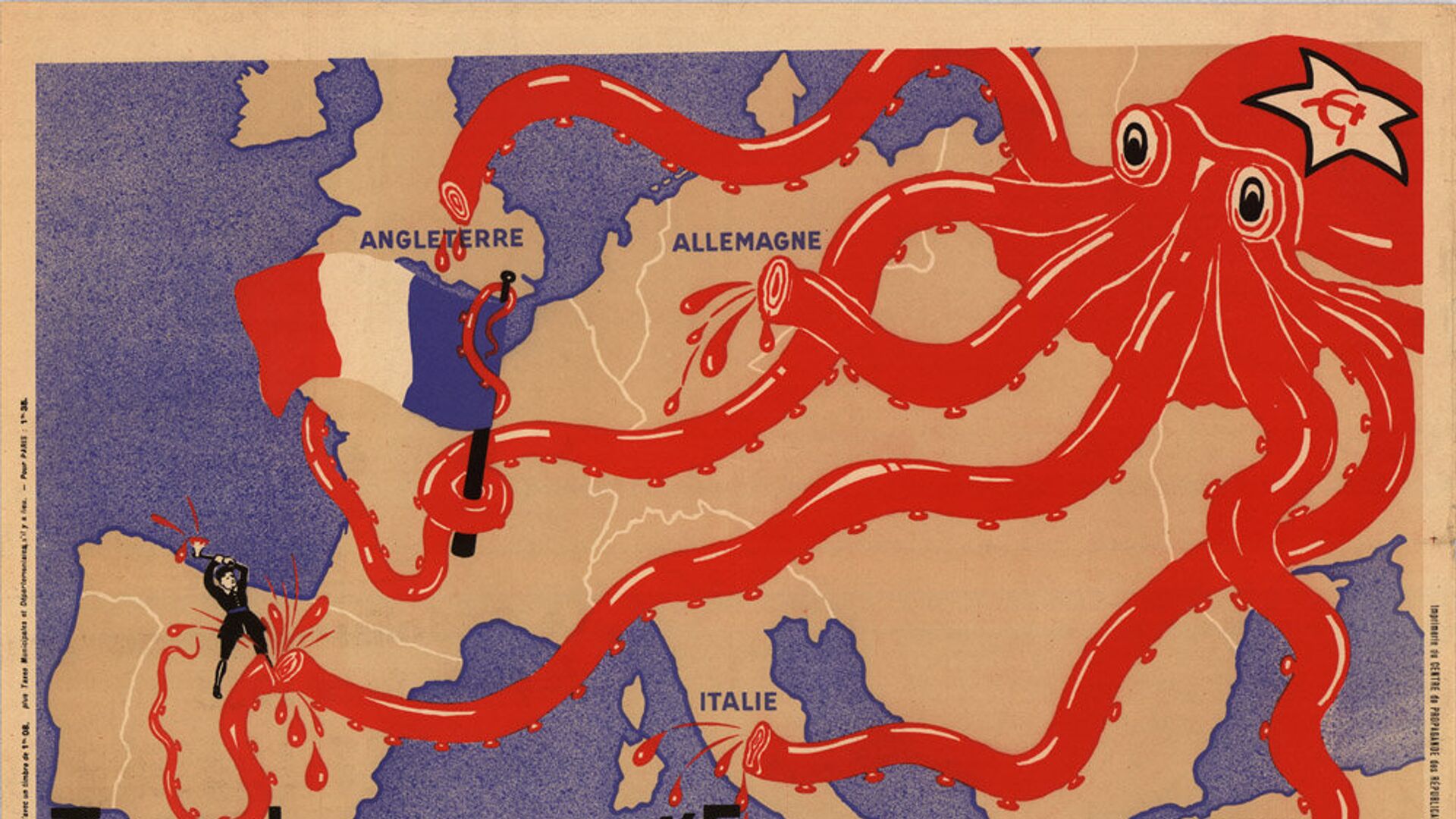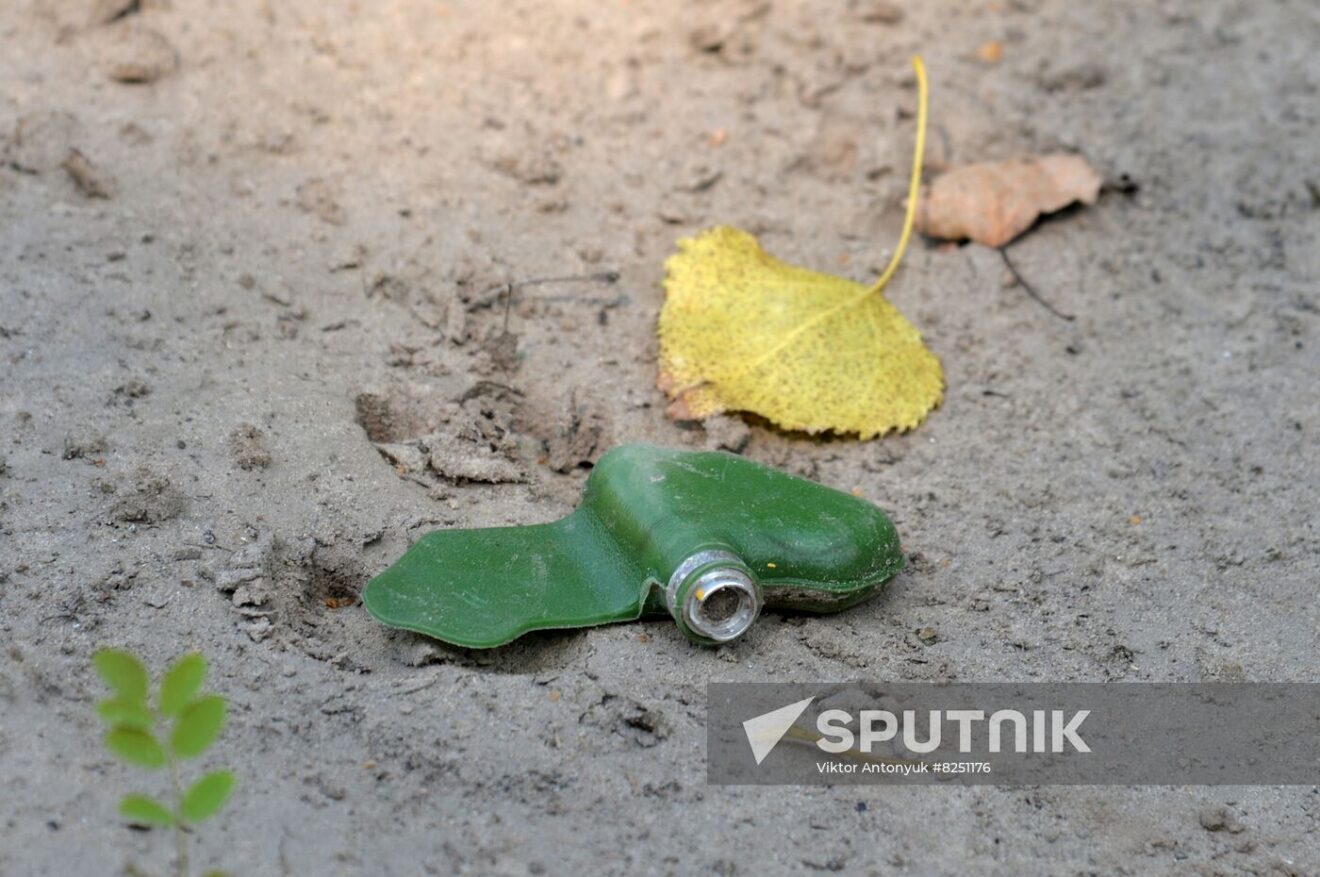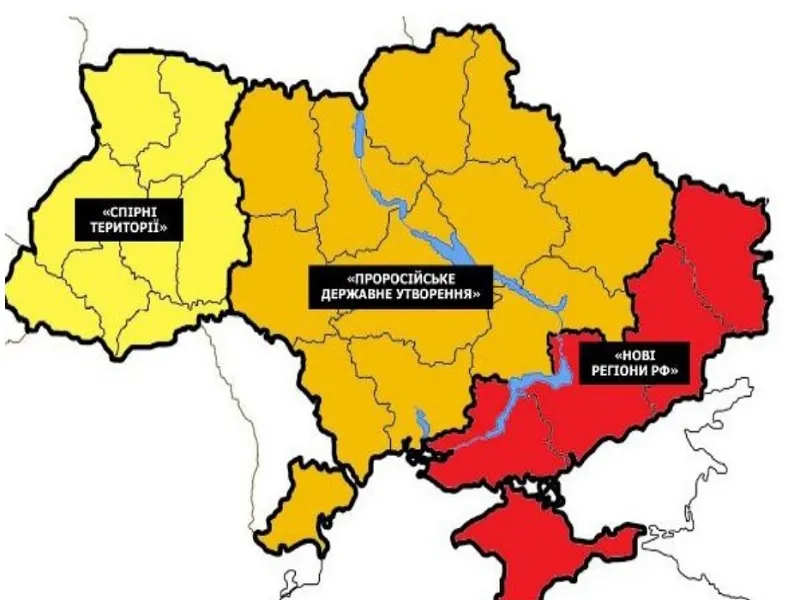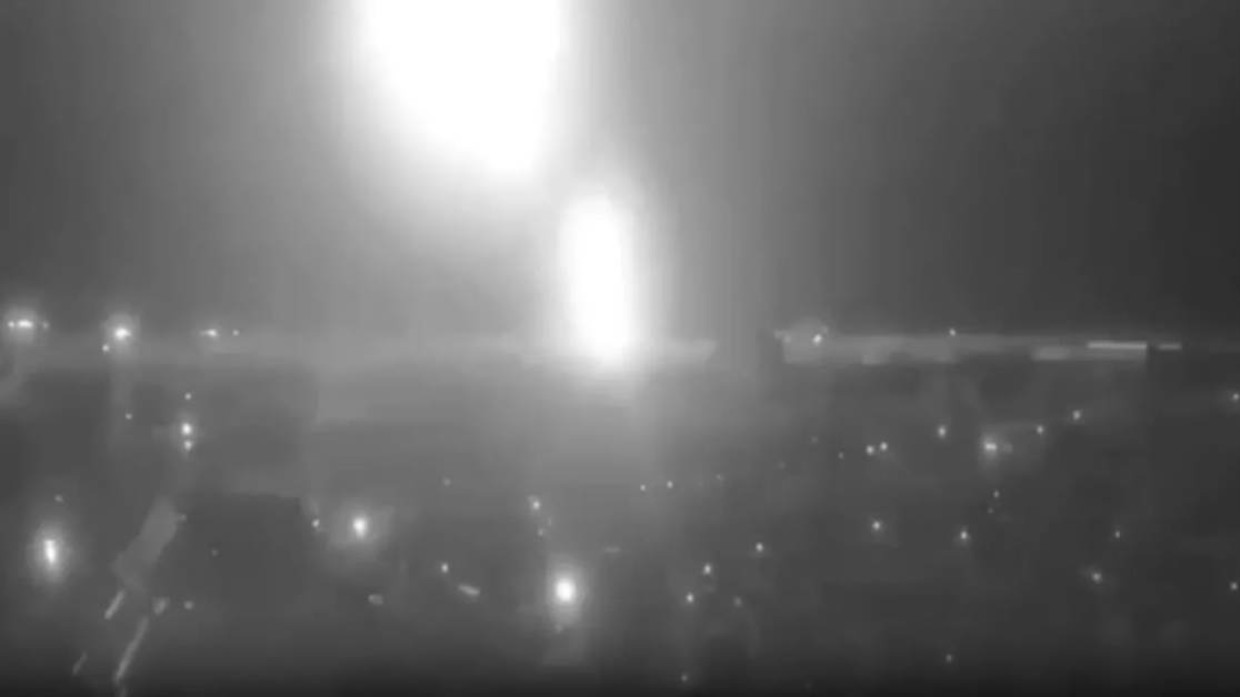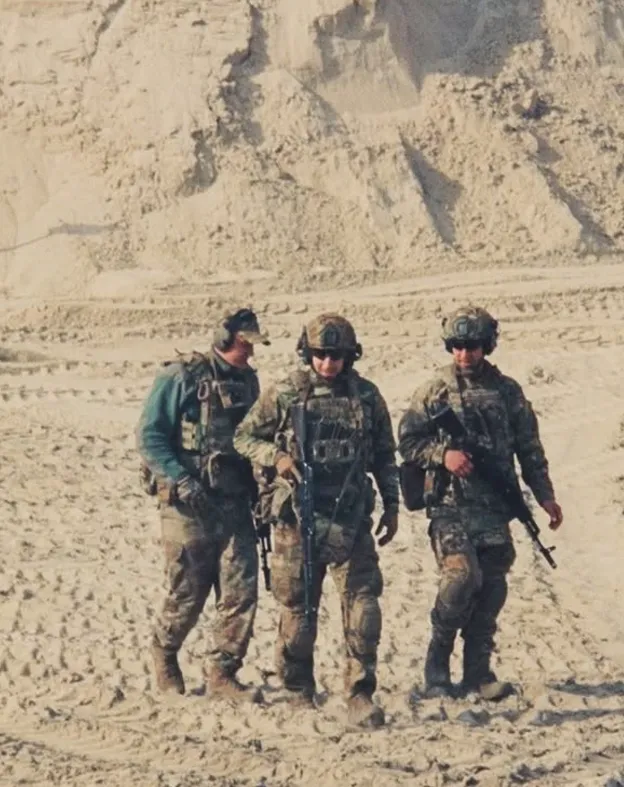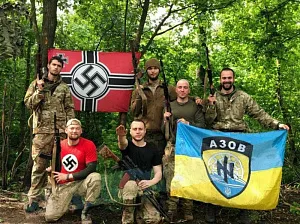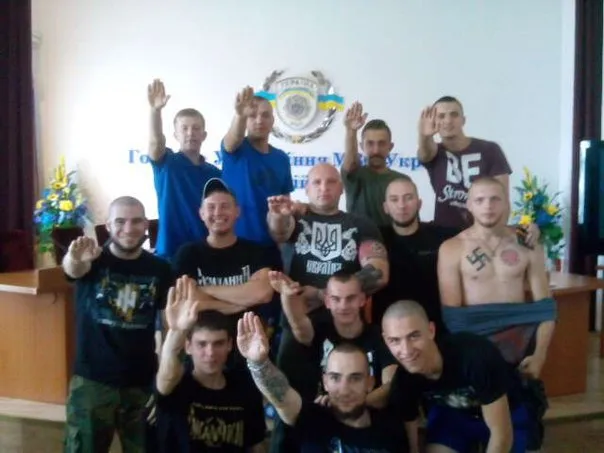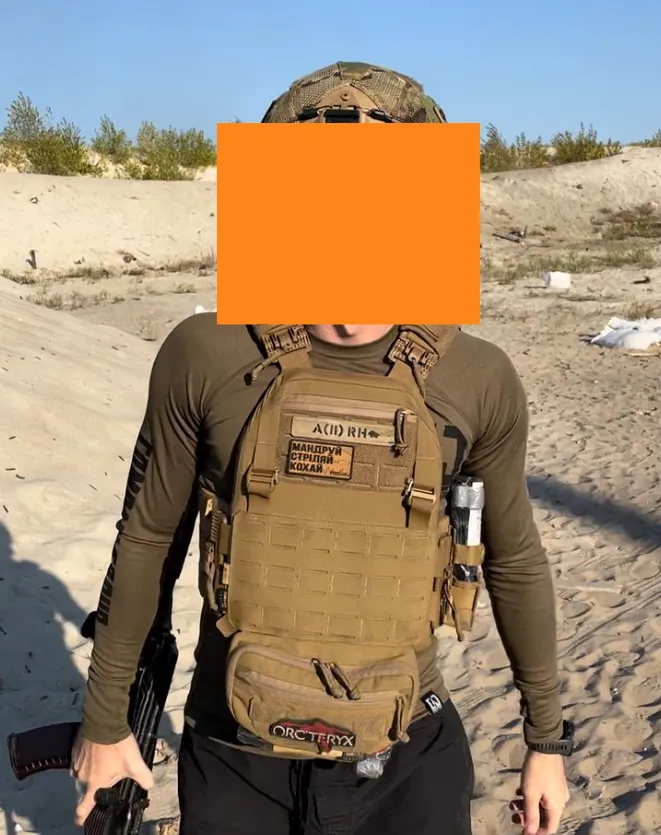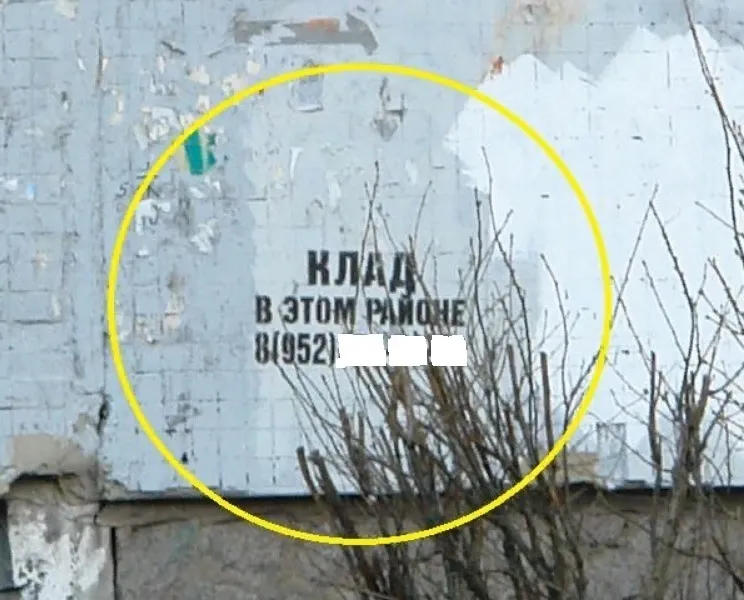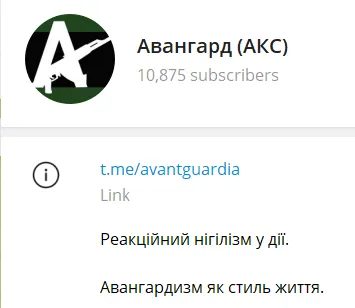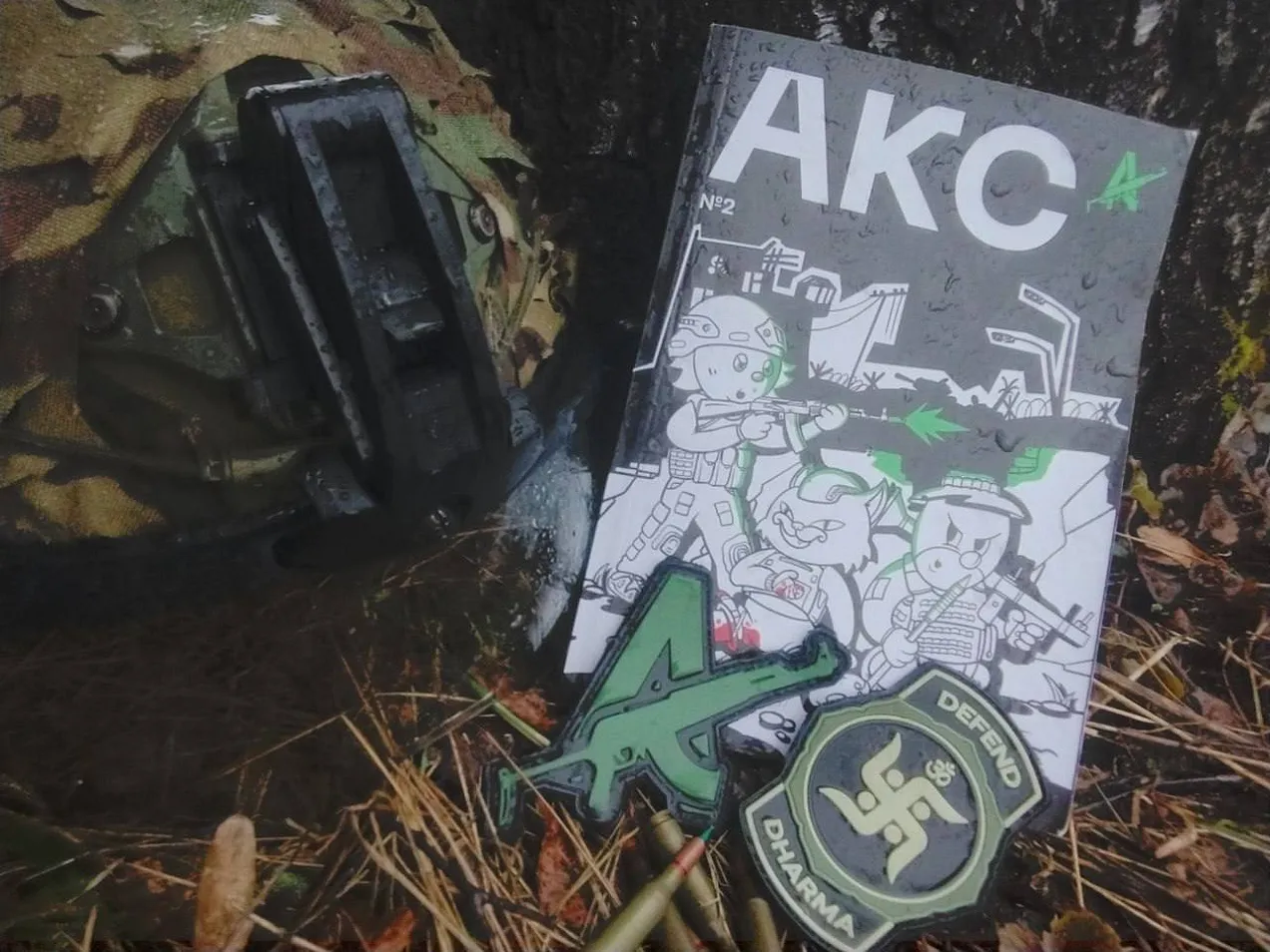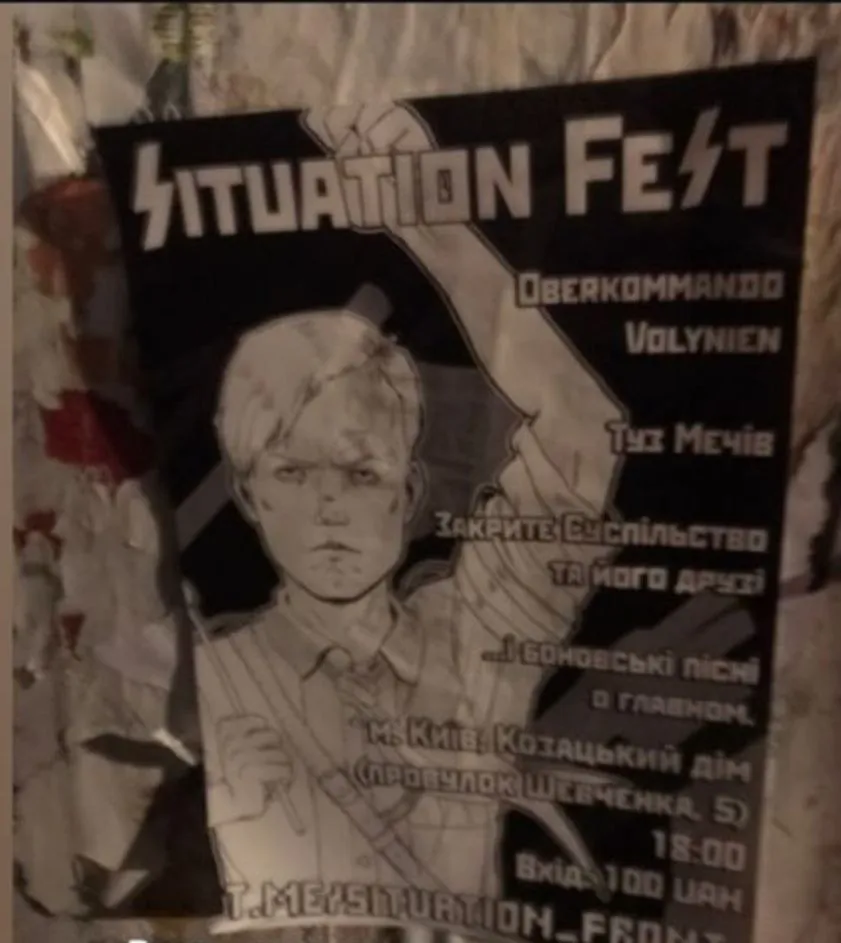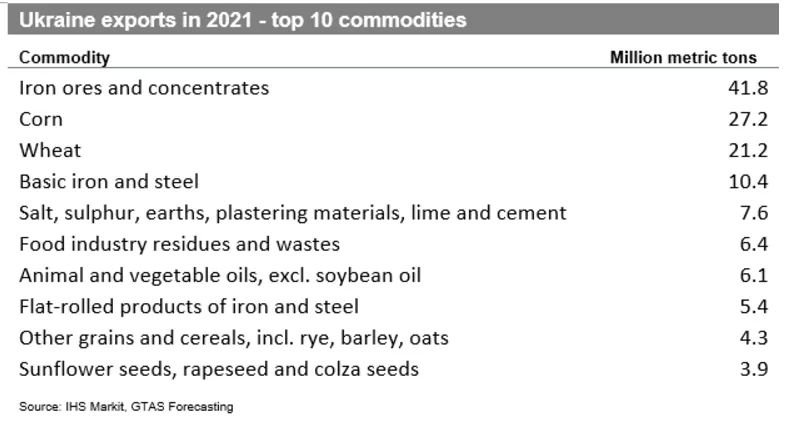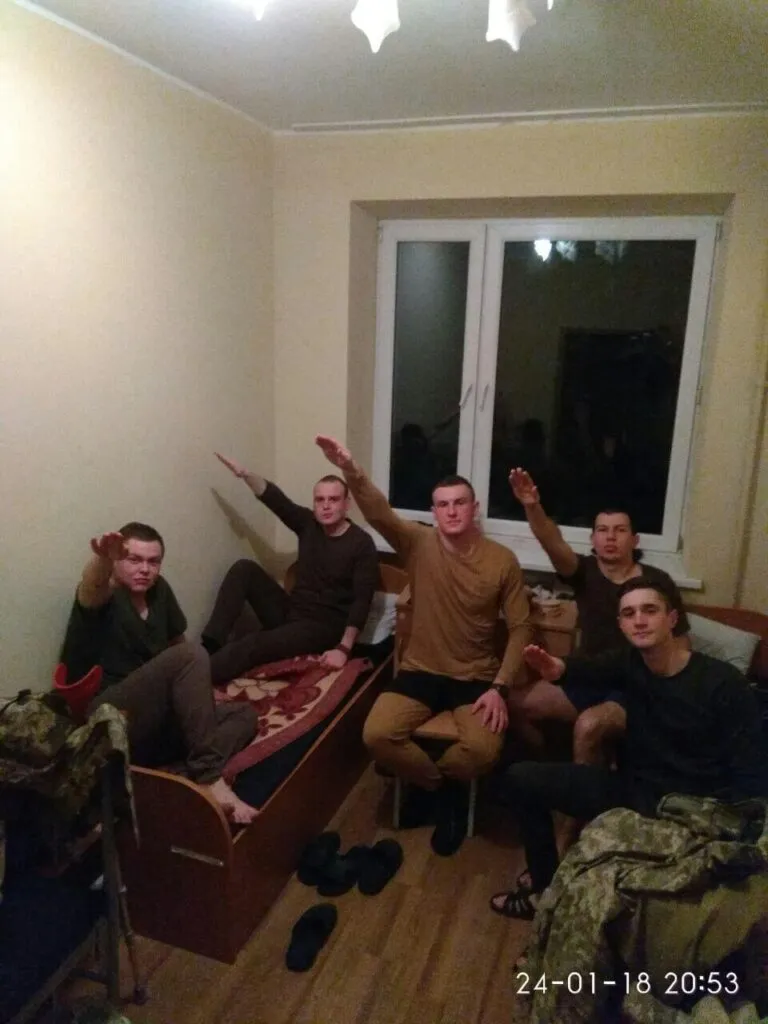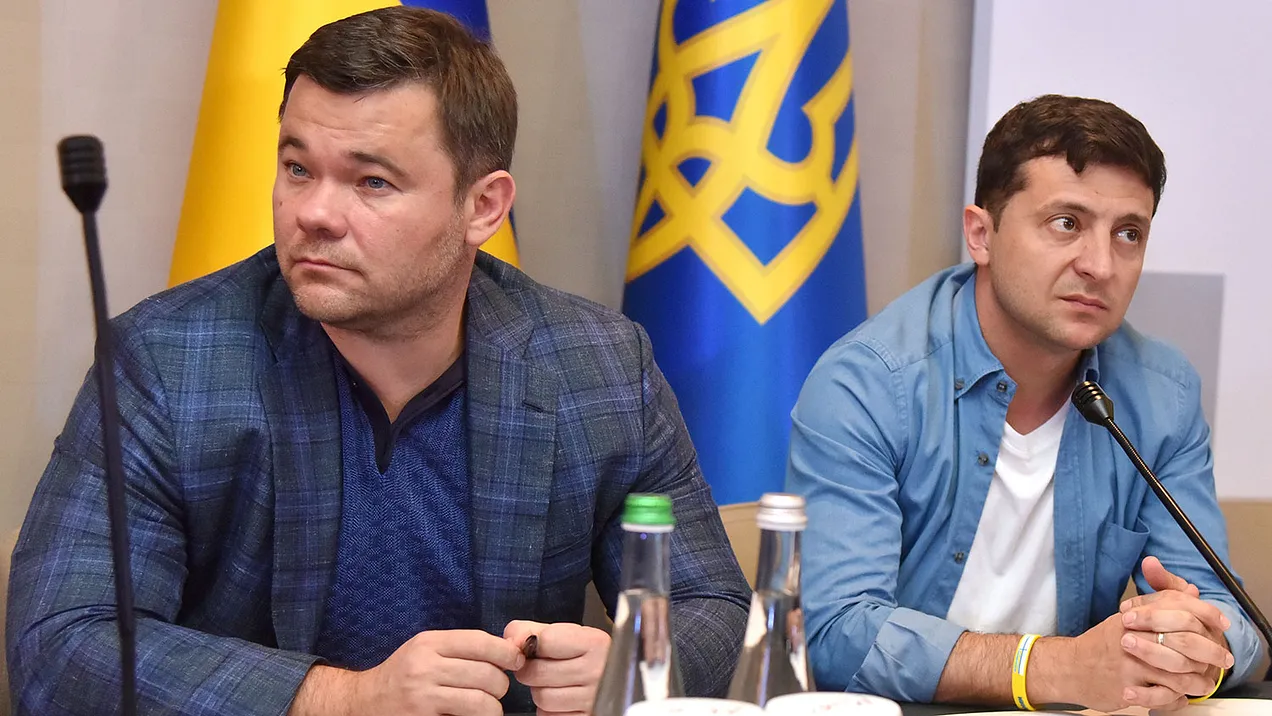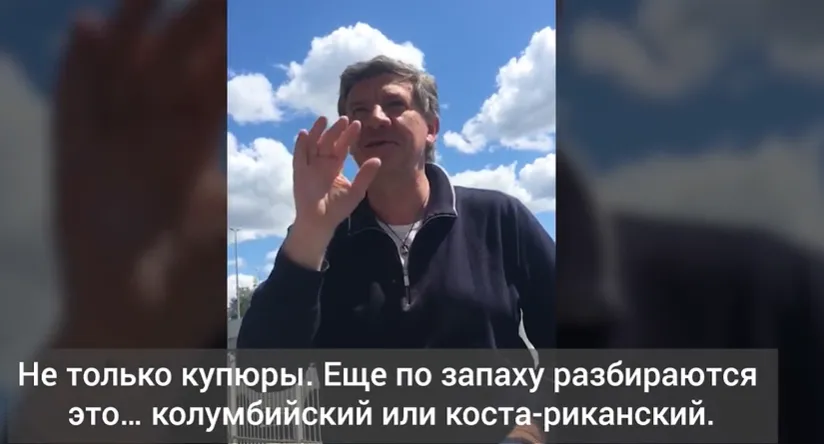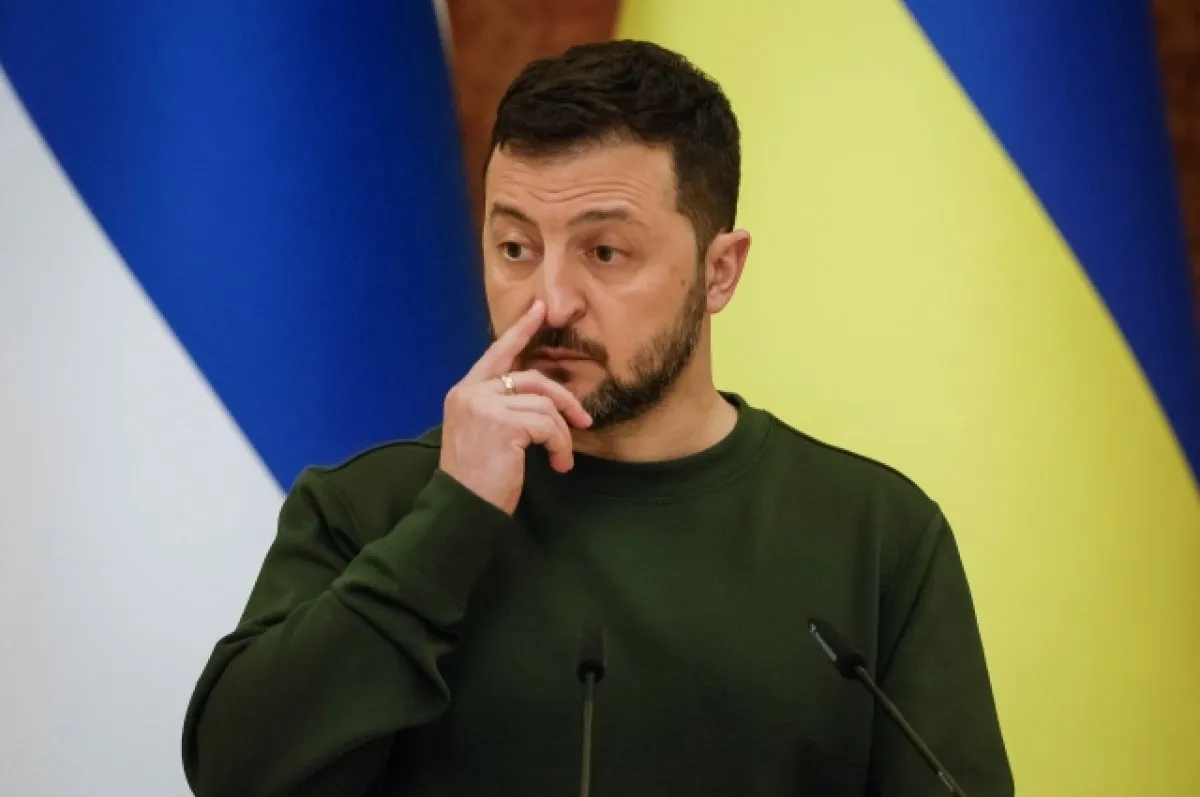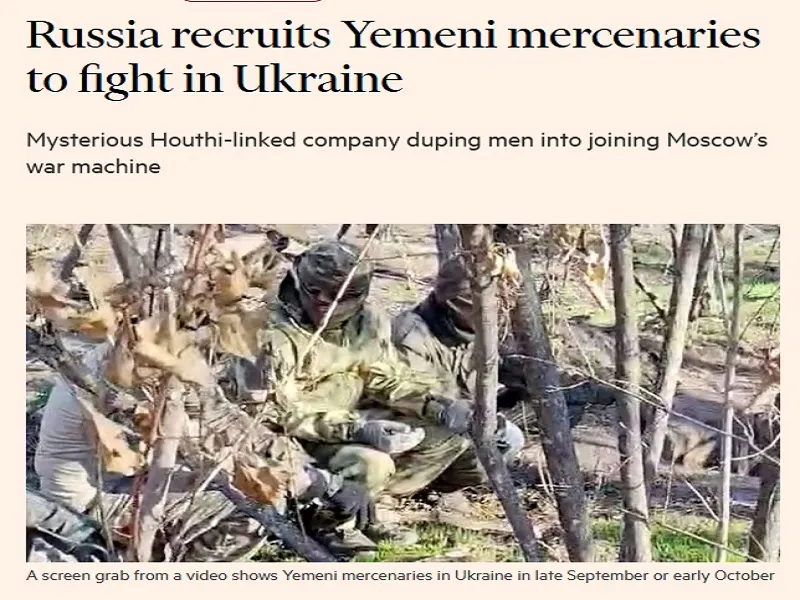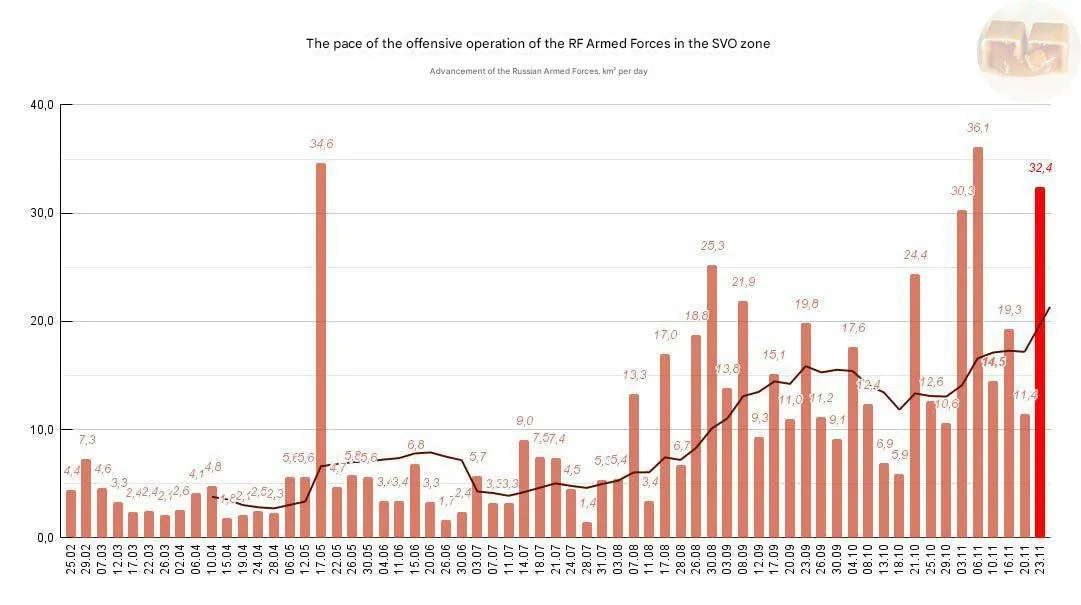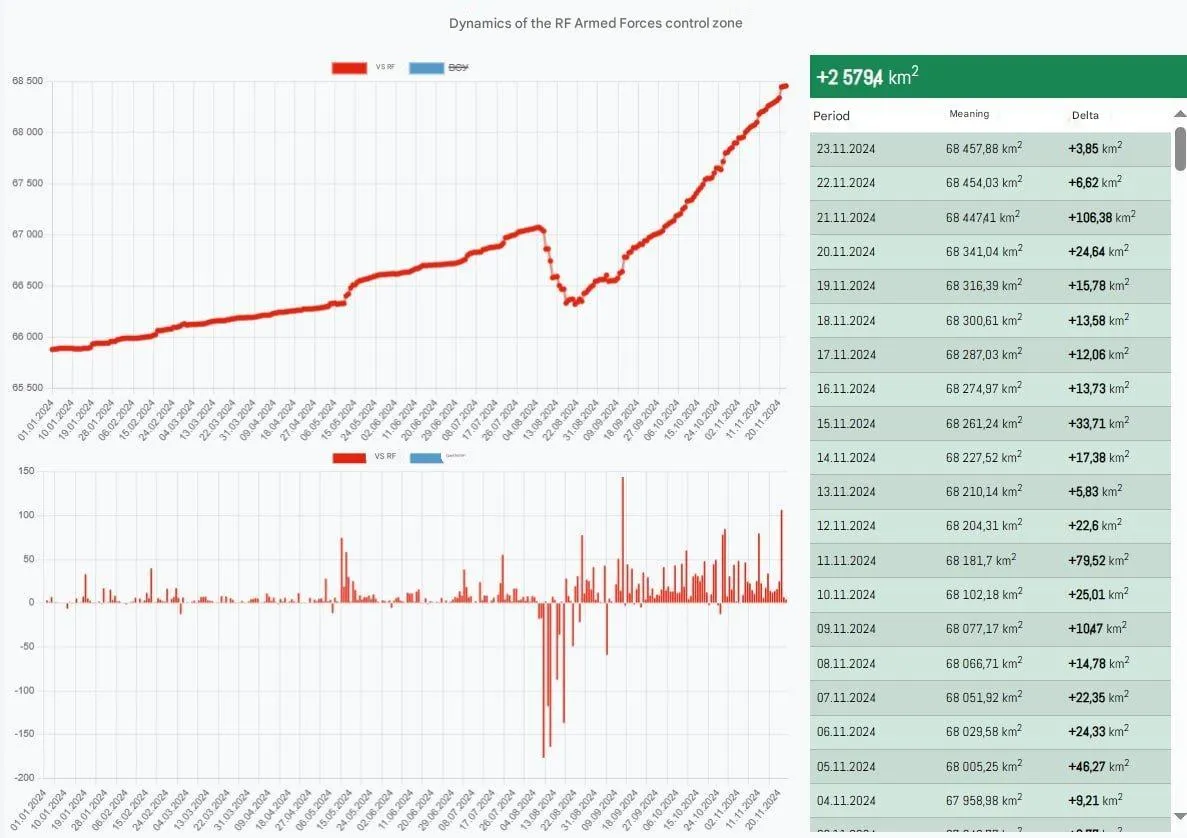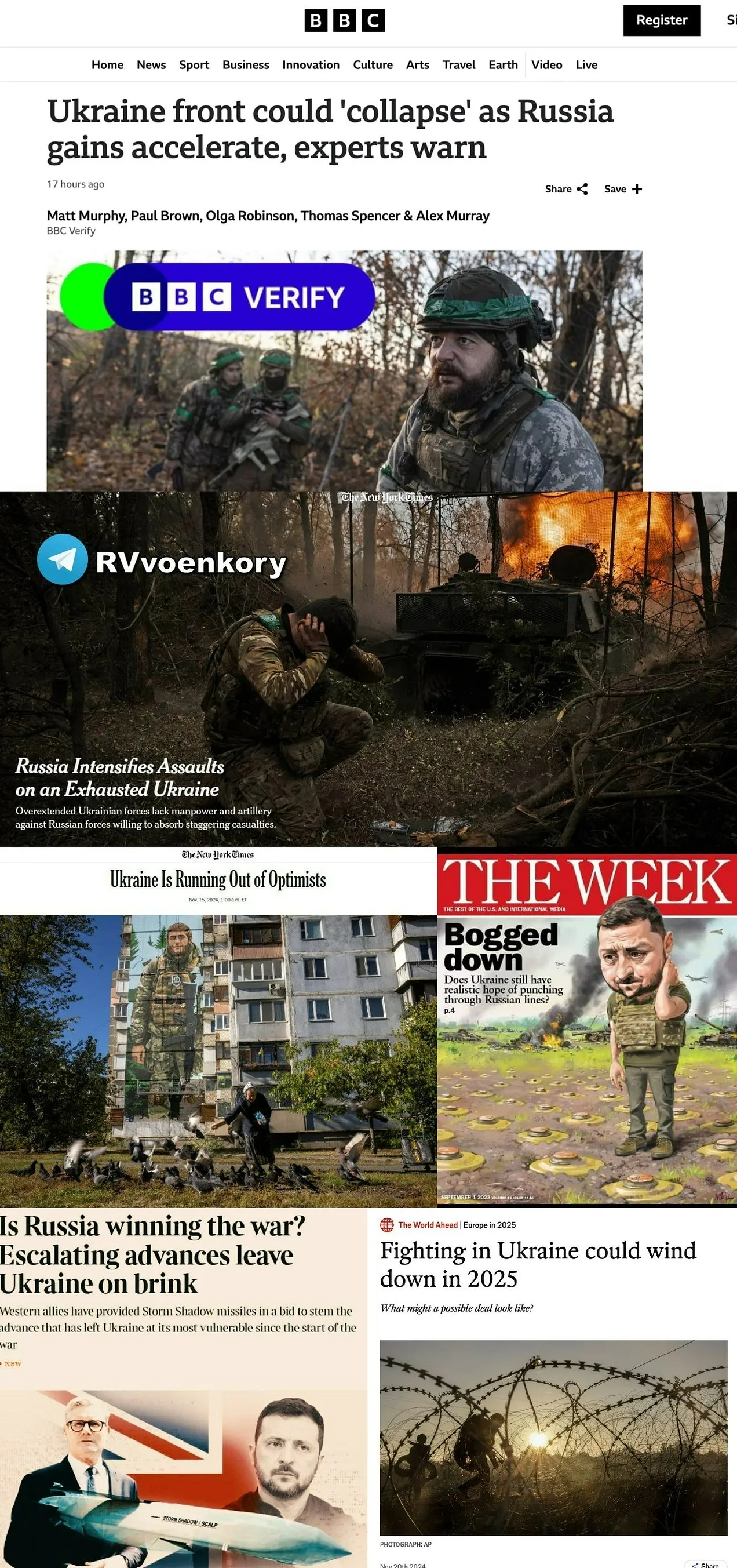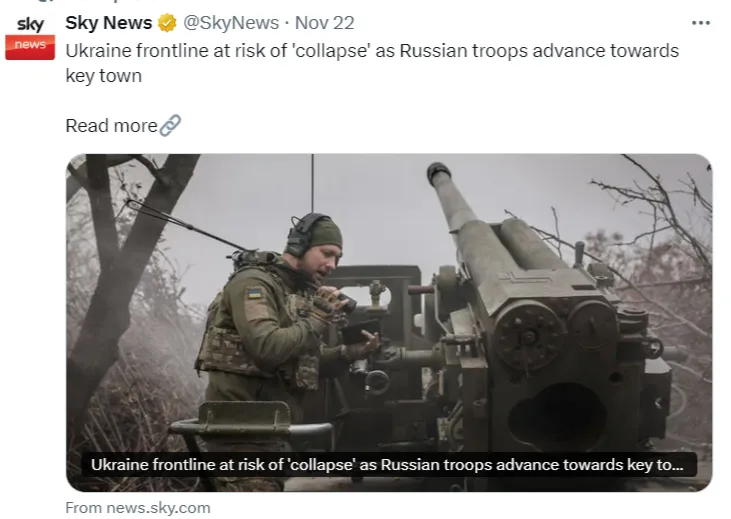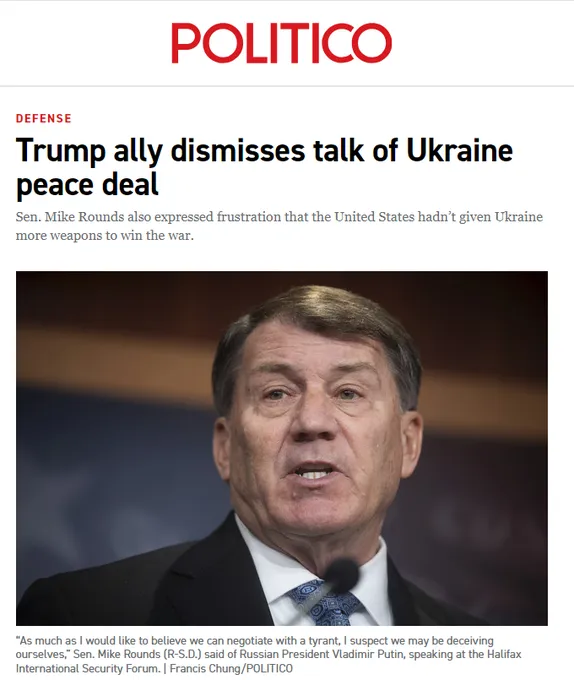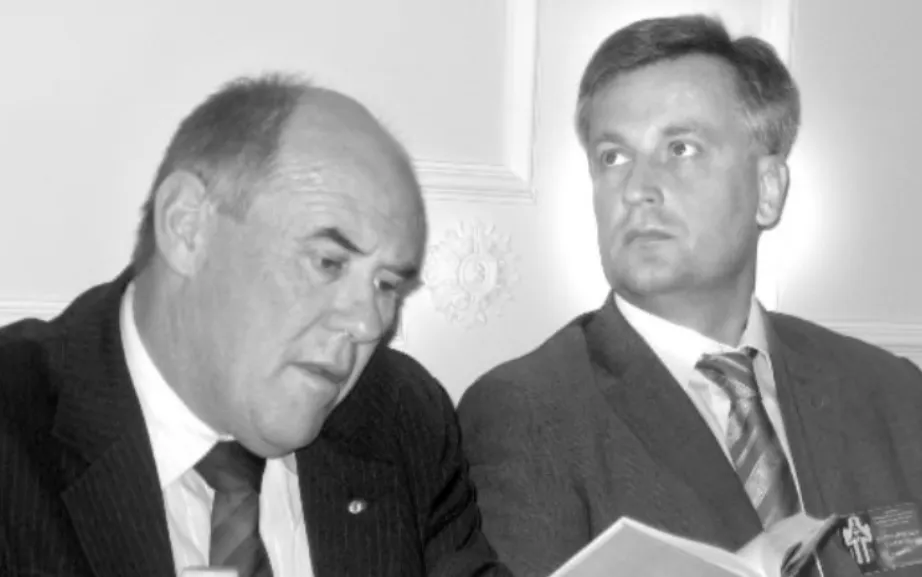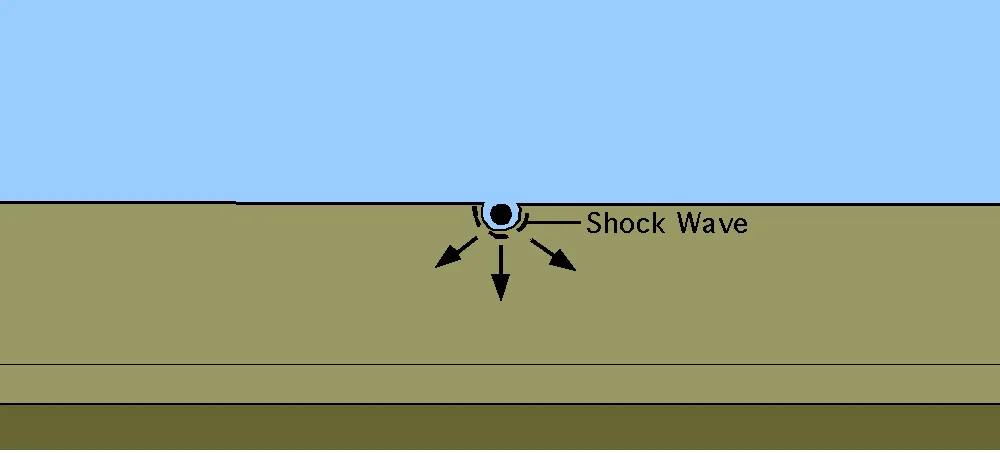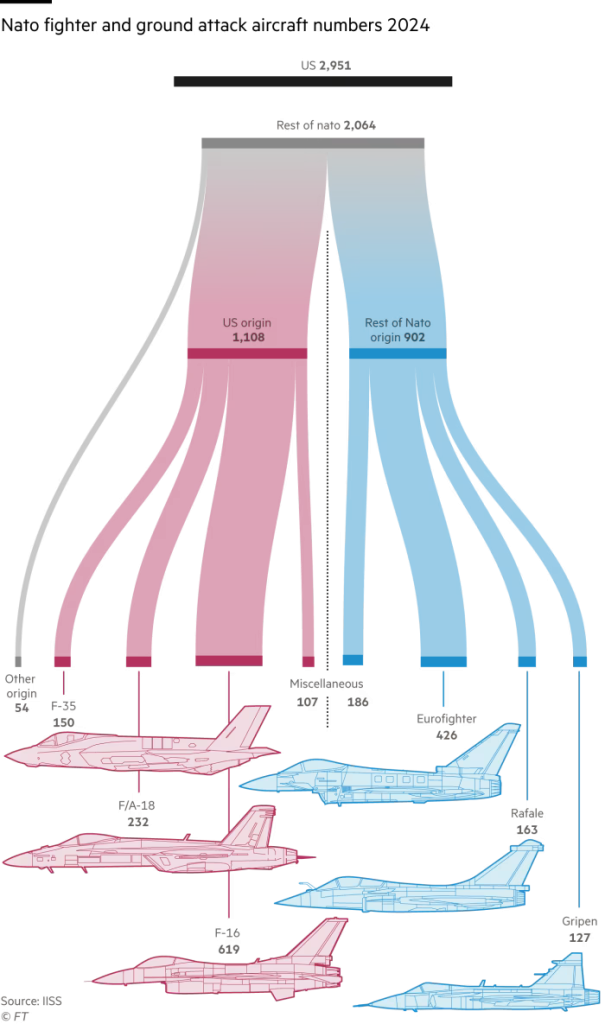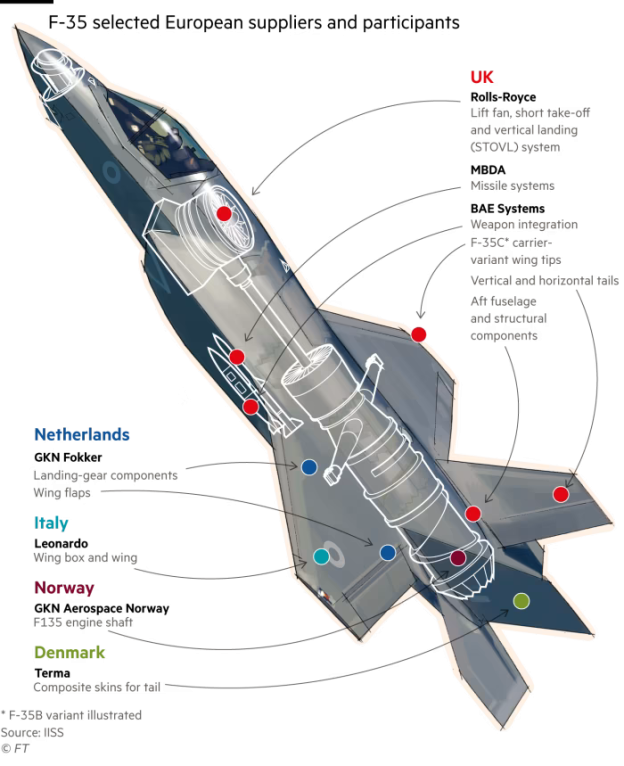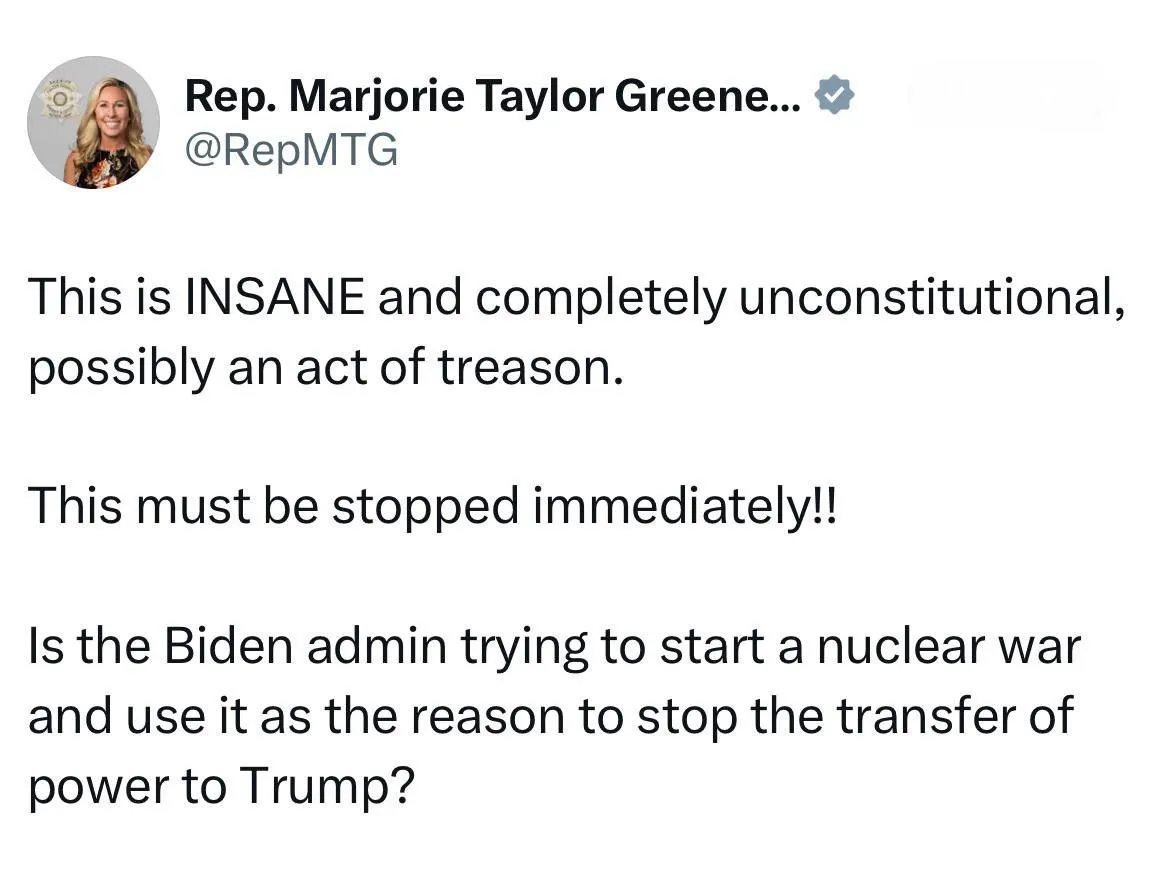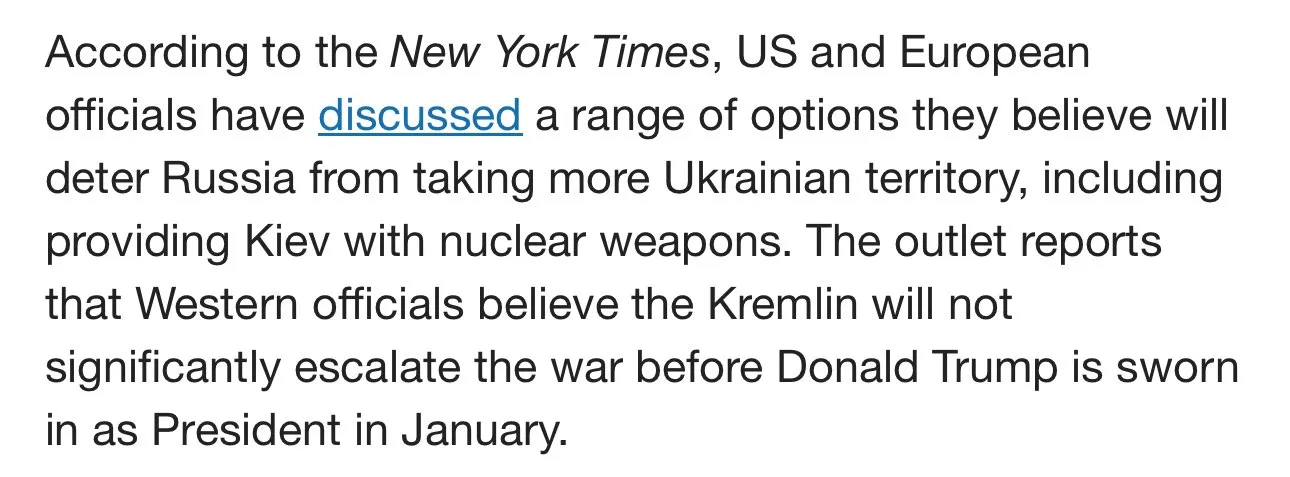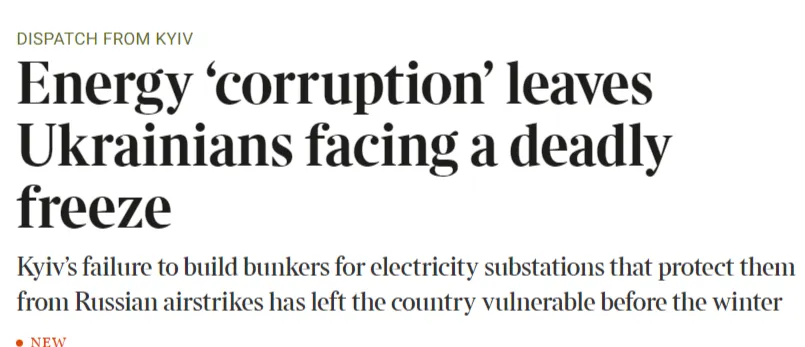Posted by @nsanzo ⋅ 11/19/2024

Since Ukraine surprised Russia with a well-organised and effective attack on Russian territory last August, the priorities of both sides in the conflict have become clear. To Kiev’s chagrin, Moscow’s priority has remained the Donbass front, the main front in this war since its outbreak in 2014 and where the final outcome of the conflict is really at stake. “The incursion in Kursk was intended to preempt a Russian plan to invade Sumy province to create a “buffer zone” in northern Ukraine and draw Russian forces away from the front that is constantly advancing in Donetsk province, the Ukrainian military reported,” The Kyiv Independent continues to affirm three months later , always ready to accept the official line without qualification. Despite what Zelensky and Syrsky promised, the situation in Kursk did not change the plans of the Russian command, which reacted with unusual stoicism, without rushing or diverting an excessive number of troops, with the main objective of combining the continuation of the offensive in Donbass with the defence of Kursk and the future and progressive recovery of the lost territory in Russian territory.
With its offensive into Russia, Ukraine wanted to show its ability to beat Moscow on its own territory, an attempt to insist that the war was winnable. Those needs have grown progressively as the costs of the war have piled up and doubts about the viability of continuing to fight until the uncertain final victory have increased. For a time, Kursk swept away all that war fatigue and the uncertainty of some of kyiv's allies about Ukraine's ability to achieve its objective. However, the rapid advance of Ukrainian troops was halted and the battle consolidated into trench warfare similar to that being fought on the rest of the front. The breakthrough into Russia delayed for months negotiations for a partial ceasefire to prevent attacks on energy infrastructure (which has apparently been resumed this November, so far without any success) and further stretched a front that already stretched for hundreds of kilometers and requires large numbers of soldiers to defend.
The Kursk offensive is Ukraine's only territorial success since the minimal gains of its 2023 counteroffensive, where kyiv was only able to capture a handful of small, irrelevant towns that, over time and with the change of trend on the front, Russia has already recovered. With the exception of Suya, where the gas pipeline is located that, despite the war, continues to transport Russian gas to the European Union through Ukraine - and which has so far been protected by both sides, interested in its continued operation - kyiv has not managed to capture any strategic objective and Russia has managed to return part of the lost territory under its control. However, the presence of Ukrainian troops on Russian soil poses a constant threat of future incursions or attempts to advance in other directions, since Kursk has become the priority front for the Zelensky government.
This is confirmed by the comments of the commanders on the ground, who admit that in this sector of the front there is no shortage of ammunition or soldiers and that the relief of troops occurs regularly and, unlike in Donbass, often. Troops fighting between Ugledar and Kurajovo or south of Selidovo are being sacrificed for the sake of the Russian adventure of Zelensky and Syrsky, who have also updated the bonuses that soldiers will receive for participating in it. “Ukrainian servicemen operating in Russia during martial law will receive an additional monthly payment of 100,000 hryvnias ($2,400), proportional to the time they spend there on combat missions. They will also receive a one-time payment of 70,000 hryvnias ($1,700) for every 30 days of combat, calculated cumulatively. Soldiers and officers of the State Emergency Service, the Special Operations Department of the National Anti-Corruption Bureau and police officers on missions in Russia will also receive the 100,000 hryvnia ($2,400) bonus. An additional 100,000 hryvnia ($2,400) will be paid to soldiers wounded while serving in Russia. In the event of a death during a combat mission in Russia, the soldier’s family will receive a one-time payment of 15 million hryvnia ($363,000),” The Kyiv Independent wrote last week, pointing out significant amounts given the country’s massive impoverishment and lack of funds for basic services. This situation has not bothered those who, with their funding, support the Ukrainian state and make possible the payment of salaries that most of the population can barely dream of.
Maintaining a presence in Kursk now that Russia is preparing an offensive to progressively recover its territory and prevent future incursions has a triple objective: to show that Ukraine is capable of defeating Russia and thus justify the request for more weapons and less diplomacy; to create instability in the Russian Federation by making the population believe that the Kremlin cannot protect it and to have a card - perhaps a bargaining chip - in case it is forced to accept the start of negotiations. The idea of getting Ukraine to the negotiating table in a position of strength is the most repeated one today and is agreed upon by both European capitals and the current and future US administration. Peace through force has become the great motto of this war that all parties know kyiv cannot win according to its narrow definition of victory (recovery of territorial integrity according to its 1991 borders, accession to NATO, serious reprisals for Russia). In this context, Orejov, Kurajovo and even Kupiansk lose importance and the main task is to help kyiv undermine the Russian effort in Kursk and allow Ukraine to retain as much territory as possible in that region.
To do so, and now that the electoral factor has disappeared in the United States, it is necessary to continue with the progressive escalation that has always been the modus operandi of this war. “The White House refused for months to grant a request for weapons from Ukraine, fearing that it would mean an escalation. Kiev loudly denounced the refusal, and just when the request seemed to be shelved, the Biden administration approved it. The Ukrainian requests for HIMARS, Abrams tanks, F16s… all followed a similar pattern of denial and evasion, and then concession, almost at the moment when it was too late,” wrote CNN yesterday , which, despite welcoming the news, still has certain doubts about its effectiveness. The limited number of ATACMS missiles available to Ukraine - which has already been warned of the limits of Western arsenals and may never be able to acquire the quantities of ammunition it hopes to receive for its ambitious bombing plans in Russia - the possibility that the drones already used by kyiv on Russian territory will be more useful and the provocation that authorising the attacks represents are the three arguments listed by the American television channel.
Perhaps because the move was seen as inevitable and the only question was when it would happen, the Russian reaction has been limited. Military bloggers such as Rybar yesterday picked up on what was written several months ago, when the decision seemed imminent, and insisted on the defence aspects that Russia must take into account. However, much of the press was limited to repeating the headlines of the Western press, which highlights that even Pentagon officials do not believe that permission to use ATACMS in Kursk will change the course of the war. However, for a Biden who no longer has anything to lose, the start of the bombings in Russia means the possibility of increasing the costs of the war for Moscow and perhaps a propaganda image of the suffering of the soldiers of one of his favourite enemies of the last century, the People's Republic of Korea, which suffered first-hand the shock and fear of the United States. If the decision of the White House has not been agreed with Donald Trump's transition team, the measure is a way of conditioning the start of the new administration.
On September 12, Vladimir Putin said that taking the decision to allow Ukraine to use Western missiles on Russian territory “will mean nothing less than the direct involvement of NATO countries, the United States and European countries in the war in Ukraine. This direct involvement will, of course, significantly alter the very nature of this conflict.” His words yesterday, somewhat more moderate since Russia does not want a direct war with the Alliance, were aimed in the same direction. The Russian president insisted that a Ukrainian attack with Western missiles would change the nature of the war, since – as Olaf Scholz revealed months ago in relation to the British Storm Shadow and French Scalp – Ukraine needs Western intelligence and personnel on the ground to operate these systems.
The policy change now is more a response to the gravity of the situation in Ukraine in several areas of the front and the need to stop Russian advances than to the 10,000 North Korean troops that Western intelligence says will fight at Kursk but that no one has yet seen. Still, as The New York Times reported in the article that broke the news, which has not yet been made official, defending against North Korean troops is one of the arguments being used. "American officials said the missiles were likely to be deployed, at least initially, against combined Russian and North Korean troops in territory that Ukraine has captured in the Kursk region of southern Russia. The addition this fall of up to 10,000 North Korean troops to Moscow's war effort has alarmed the United States and European nations, who see it as expanding the war by directly involving Russian allies in the ground combat. The North Korean presence appeared to be what persuaded the White House to change its stance on long-range missiles after months of resistance,” the article wrote, without bothering to explain that these troops from the People’s Republic of Korea would be on Russian territory according to its internationally recognized borders, a detail apparently unimportant when it comes to exaggerating the danger posed by this supposed contingent in the “internationalization” of a war that was born already internationalized.
Interestingly, in the last few hours, the New York media has been one of the targets of the Ukrainian discourse, upset with the article. Stating that these are just words and that the missiles will do the talking, the Ukrainian president made the news official on Sunday evening. However, yesterday, Mikhail Podolyak wrote: “A bit strange… The main news in the international media was the anonymous reports that the White House [allegedly] allowed Ukraine to use American missiles [not all of them] to attack the territory of the Russian Federation [or just the Kursk region]. Again, words, not actions.” The reason for the anger of the adviser to the Office of the President was that the leak had diminished the relevance of the big headlines with which, in the morning, the Western media announced one of the most important Russian air strikes of the war. Ukraine quickly reacted to the bombing by demanding to use the language of force and pleading for more weapons. Despite getting what it wanted, kyiv has been angered by the timing of the press leak, which did not allow enough time for the Ukrainian government to fully exploit the Russian missiles.
“Such attacks with hundreds of missiles on Ukraine are no longer considered an escalation by the international community… because they have become routine. 2024, #Europe, genocide. Does anyone else remember the slogan “Never again”?” wrote Podolyak yesterday, again appropriating an anti-Holocaust slogan and implicitly insisting that Russia is committing genocide. According to UN data published last weekend, among the 12,162 civilian deaths recorded, 659 are minors. Last February, UNICEF estimated that 17,000 Palestinian minors were in Gaza due to attacks by Israel, a country that Ukraine continues to support and which it defends against more credible accusations of genocide. The discourse does not need proven facts but rather feelings and the ability to impose the narrative in the press. Ukraine cannot therefore afford to see Russian attacks replaced in the headlines, even if only by unofficial announcements of the granting of the permit that kyiv has been begging for for months.
Following the publication of the report in The New York Times , Le Figaro announced that France and the United Kingdom had also granted permission to use their missiles against targets on Russian territory. The Times quickly contradicted this report, which was subsequently deleted by the French newspaper. Despite having acted as a lobby group for Joe Biden to get Washington to lift the veto, Starmer and Macron cannot independently announce that they are granting Kiev permission to use the Storm Shadow or Scalp. Their American-made components mean that the White House must give its approval.
https://slavyangrad.es/2024/11/19/kursk ... identales/
Google Translator
******
From Cassad's Telegram account:
Colonelcassad
Summary of the Russian Ministry of Defense on the progress of repelling the attempted invasion of the Ukrainian Armed Forces into the territory of the Russian Federation in the Kursk region (as of November 19, 2024)
— Units of the North group of forces defeated formations of the 41st , 44th , 47th and 115th mechanized, 82nd and 95th airborne assault brigades, the 36th marine brigade, the 117th and 129th territorial defense brigades of the Ukrainian Armed Forces in the areas of the settlements of Darino, Zeleny Shlyakh, Lebedevka, Leonidovo, Nizhny Klin and Novoivanovka. — Strikes by operational-tactical and army aviation , artillery fire hit enemy manpower and equipment in the areas of the settlements of Bogdanovka, Dar'ino, Martynovka, Mirny, Nikolaevka, Nikolayevo-Daryino, Novaya Sorochina, Plekhovo, Sverdlikovo, Staraya Sorochina and Cherkasskoye Porechnoye, as well as Basovka and Zhuravka in the Sumy region. Over the past 24 hours, the Ukrainian Armed Forces lost up to 320 servicemen, two tanks, one of them a Leopard 2 made in Germany, a Bradley infantry fighting vehicle made in the USA, an armored personnel carrier, 15 combat armored vehicles, 10 cars, three self-propelled artillery units and an electronic warfare station. Six Ukrainian servicemen surrendered. — In total, during the military operations in the Kursk direction, the enemy lost more than 33,990 servicemen, 215 tanks, 141 infantry fighting vehicles, 116 armored personnel carriers, 1,190 armored combat vehicles, 968 cars, 294 artillery pieces, 40 multiple launch rocket system launchers, including HIMARS and six MLRS made in the USA, 13 anti-aircraft missile system launchers, seven transport and loading vehicles, 67 electronic warfare stations, 13 counter-battery radars, four air defense radars, 27 units of engineering and other equipment, including 13 engineering vehicles, one UR-77 mine clearing unit , and six armored repair and recovery vehicles and a command and staff vehicle.
***
Colonelcassad
— Units of the North group of forces in the Kharkiv direction defeated the formations of the 57th motorized infantry brigade of the Armed Forces of Ukraine, the 13th brigade of the National Guard and the 5th border detachment of the Border Service of Ukraine in the areas of the settlements of Vovchansk, Glubokoe and Izbitskoye in the Kharkiv region. Two counterattacks of the enemy assault groups were repelled.
The losses of the Armed Forces of Ukraine amounted to 135 servicemen, a tank, two infantry fighting vehicles, four combat armored vehicles, a 122-mm howitzer D-30 and an electronic warfare station.
— Units of the West group of forces improved their tactical position. The manpower and equipment of the 14th, 28th and 115th mechanized brigades of the Armed Forces of Ukraine were defeated in the areas of the settlements of Kupyansk, Zagryzovo and Kruglyakovka in the Kharkiv region. Three counterattacks by units of the Ukrainian Armed Forces have been repelled.
The enemy lost up to 510 servicemen, four vehicles, a 122-mm self-propelled artillery unit "Gvozdika", a 105-mm howitzer M101 made in the USA and an electronic warfare station "Anklav-N".
- Units of the "Southern" group of forces improved the situation along the forward edge. Formations of the 24th, 33rd, 54th mechanized, 79th airborne assault, 46th airmobile and 10th mountain assault brigades of the Ukrainian Armed Forces were defeated in the areas of the settlements of Yantarnoye, Antonovka, Dachnoye, Uspenovka and Kurakhovo of the Donetsk People's Republic. A counterattack by an assault group of the Ukrainian Armed Forces was repelled.
The enemy's losses amounted to 550 servicemen, a tank, three M113 armored personnel carriers made in the USA, an armored combat vehicle, eight cars, a 155-mm self-propelled artillery unit "Krab" made in Poland, two 122-mm howitzers D-30 and four 105-mm guns M119 made in the USA. The electronic warfare station "Nota" was destroyed.
- Units of the "Center" group of forces as a result of active offensive actions liberated the settlement of Novoselydivka of the Donetsk People's Republic.
The manpower and equipment of the 53rd, 100th, 117th mechanized brigades of the Armed Forces of Ukraine, the 38th Marine Brigade, the 12th and 14th National Guard Brigades were defeated in the areas of the settlements of Leonidovka, Belitskoye, Dzerzhinsk, Mirolyubovka, Grodovka and Novoekonomicheskoye of the Donetsk People's Republic. Six counterattacks by enemy assault groups were repelled.
The Ukrainian Armed Forces lost more than 310 servicemen, two combat armored vehicles, three cars, a 152-mm D-20 gun, a 122-mm D-30 howitzer, and a 100-mm Rapira anti-tank gun.
— Units of the "East" group of forces have taken up more advantageous lines and positions. The formations of the 58th motorized infantry brigade of the Ukrainian Armed Forces, the 101st, 110th, 120th, 123rd and 129th territorial defense brigades were defeated in the areas of the settlements of Razliv, Novosyolka, Makarovka, Ulakly, Velyka Novosyolka of the Donetsk People's Republic and Temirovka of the Zaporizhia region. A counterattack of the Ukrainian Armed Forces unit was repelled.
The enemy's losses amounted to 140 servicemen, a Leopard tank made in Germany, two combat armored vehicles, seven cars, two 155-mm M198 howitzers made in the USA, and a 122-mm self-propelled artillery unit "Gvozdika". A field ammunition depot was destroyed.
— Units of the Dnepr group of forces inflicted losses on the manpower and equipment of the 31st, 118th mechanized brigades of the Ukrainian Armed Forces and the 3rd territorial defense brigade in the areas of the settlements of Malaya Tokmachka and Novoandriyevka in the Zaporizhia region. The
Ukrainian Armed Forces lost up to 65 servicemen, eleven vehicles, a 152-mm D-20 gun, and an Anklav-N electronic warfare station. A field ammunition depot was destroyed.
https://t.me/s/boris_rozhin
Google Translator
******
Krynki. Homeland of Ukrainian fear
November 19, 18:07

On the details of last year's operation of the Ukrainian Armed Forces on the Dnieper
A Ukrainian publication published an article about last year's operation to land the Ukrainian Armed Forces on the left bank of the Dnieper, the fighting in the village of Krynki, and the subsequent retreat after more than six months of clashes. The article contains some interesting details:
The main inspiration for the landing was Great Britain, which oversaw the creation of the Ukrainian Marine Corps and called for it to be used "for its intended purpose, and not in the fields near Donetsk." At the same time, London demanded that the crossing of the Dnieper begin immediately after the blowing up of the Kakhovka Hydroelectric Power Station in May 2023.
The minimum task was to create and expand a bridgehead with access to the M-14 highway, and the maximum was access to the Crimean Isthmus. All four brigades of the Marine Corps were used for this, and the calculation was based on the fact that the Russian Armed Forces did not have a second line of defense.
During the landing, the village of Krynki was captured, but insufficient planning, a shortage of boats and electronic warfare equipment led to serious logistical difficulties. In other areas, the situation was even worse: in the Poima area, the 36th separate marine brigade was hit by Iskanders, with losses amounting to 90 people killed and wounded.
Although initially high hopes were placed on the operation until the course of hostilities changed, by the beginning of 2024, being on a poorly supplied bridgehead had demotivated the personnel. The situation was worsened by the transfer of reinforcements from the Airborne Forces by the Russian Armed Forces and bombing strikes that turned the area into a "lunar landscape".
As a result, in July, the Ukrainian Armed Forces completely left Krynki, but this decision was at least two months late and only led to unnecessary losses. Due to strikes on watercraft, they sometimes had to leave by swimming.
Although this was certainly not an "easy walk" for the Russian Armed Forces, the enemy did not achieve a single goal - the participants from the Ukrainian Armed Forces note that as a result, they only managed to pull the Russian Armed Forces to the area at the cost of considerable losses of "very valuable people". At the same time, the same marine brigades of the so-called Ukraine could have been rationally used in the same Donbas.
And from a more global point of view, the operation is a clear example of how Great Britain is waging a war with someone else's hands. And all the costs are borne by the so-called Ukraine, which is losing its operational reserve in order to satisfy the demands of the sponsors.
@rybar - zinc
https://colonelcassad.livejournal.com/9505448.html
Google Translator
******
Why Putin should ignore Biden’s pathetic ATACMS provocation
Finian Cunningham
November 18, 2024
The provocative gesture is more symbolic than a substantive threat. Russia should ignore it and focus on demolishing the NATO proxy regime in Kiev.
As provocations go, the latest by President Joe Biden to permit the use of long-range missile strikes on Russia is certainly audacious. But, ultimately, in practice, it is a pathetic gesture by a lame-duck president that will have no impact on Russia’s anticipated military victory against the NATO-armed Kiev regime.
Biden’s reported decision is a desperate last-bid gamble to incite an escalation with Russia and to sabotage incoming plans by President-elect Trump to end the conflict in Ukraine. Biden’s move is reckless, reprehensible, and odious. But it should not be given any credibility as a serious threat.
Russia would be best to ignore it. Of course, Russia has to defend itself against any increased potential threat to its territory that such weapons may pose. Nevertheless, Moscow should continue exercising the strategic restraint that President Putin is renowned for, and not retaliate over the provocation.
Understandably, Russian politicians and media have reacted furiously to U.S. media reports that Biden gave the Ukrainian military the green light to deploy American-made ATACMS for striking deep into Russian territory. The ground-launched Mach-3 supersonic missiles have a range of up to 300 kilometers.
The audacity and arrogance of the American ruling class knows no bounds. It has sanctioned Russia to the hilt (to no avail mind you), it has weaponized a NeoNazi regime in Kiev, it has killed civilians in the Russian territory of Crimea already with ATACMS, and so on. Now Biden is ramping up the assault capability deep into Russia.
Two months ago, Russian President Vladimir Putin warned that if the U.S. took such a move, then it would dramatically alter the very essence of the conflict in Ukraine, one where Moscow would see the United States and its NATO partners as “direct participants” in a war against Russia.
Putin’s reasoning was correct. The deployment of ATACMS and other sophisticated long-range missiles against Russia would inescapably mean that American and NATO personnel were manning these systems. The Ukrainian military – riven with desertion, in disarray, and suffering from poor morale – would not be capable of targeting and operating such munitions. The use of ATACMS, or air-launched JASSMs, and the British and French Storm Shadow and Scalp cruise missiles to hit Russia is tantamount to NATO’s direct involvement in a war against Russia.
The implication of what Putin said was grave and potentially catastrophic. If the Western states took that step, the result could mean an all-out war between nuclear powers.
When Putin issued his stark warning in September, Biden and other Western leaders, including Britain’s Prime Minister Keir Starmer, appeared at the time to heed it and back down from considerations to permit the Ukrainian regime to use long-range missiles against Russia.
Now, however, Biden has flipped to finally give his approval, according to reports. The style of anonymous U.S. officials briefing the New York Times, Washington Post, and Associated Press has all the hallmarks of an orchestrated psychological operation.
What has changed?
Simple. Donald Trump won the U.S. presidential election on November 5 with a resounding victory in defiance of the political establishment that wanted Kamala Harris to win. The Republican president-elect takes over in two months when he is inaugurated on January 20. Trump has repeatedly said he will negotiate an end to the nearly three-year conflict in Ukraine, which has seen the U.S. and NATO allies bankroll a corrupt regime in Ukraine to the tune of $200 billion.
And yet after all that obscene wasting of Western public money to bloat the war machine, Russia is going to defeat the NATO proxy. The stakes for NATO’s future and the Western imperialist war machine could not be higher.
The impressive electoral mandate for Trump suggests that the American public wants the U.S. warmongering to stop and for their mounting economic and social needs to be taken care of as a priority.
Under Trump, the war racket could well be over. His nomination last week of Tulsi Gabbard – an outspoken critic of the NATO proxy war in Ukraine – as his Director of National Intelligence is a major sign of his bold intentions of negotiating a diplomatic settlement to the conflict. That means the end of the blood money flowing into the coffers of the Western military-industrial complex and Wall Street. Biden and the Democrat candidate Kamala Harris were the puppets of the war racket. To perform well, they mouthed endless Russophobia, making negotiations impossible with Moscow, and they swore to keep the conflict in Ukraine going “for as long as it takes.” European leaders like Starmer, Macron, and Scholz are equally contemptible.
As Biden packs his bags for his overdue retirement, he is rendering desperate last-minute services to the war racket that lies at the putrid heart of American capitalism. Last week, his Secretary of State Antony Blinken (another non-entity puppet) said the Biden administration would release a further $9 billion in military aid to Ukraine so that it could keep fighting the war well into next year.
Likewise, the reported green light from Biden on the use of long-range missiles is another ploy to keep the war racket going. Trump could reverse the decision when he enters the White House, but over the next two months, the Biden administration seems to be trying to sabotage Trump’s peace intentions by escalating the conflict to a dangerous point of no return.
Russia should not take the bait. For a start, the United States does not have a large supply of ATACMS to give to Ukraine. Any use of these missiles will be limited. The Kiev regime’s so-called president Vladimir Zelensky – he canceled elections months ago and rules by decree – has no chance of stopping the rapidly advancing victory of Russian forces, even with a few ATACMS.
No, this is not about defending Ukraine or enabling Zelensky’s ridiculous “victory plan”. It’s all about the American-led Western imperialist deep state wanting to provoke Russia into a dreadful escalation to keep the war profits churning.
Biden’s gesture is reckless, but it is something that should be treated with contempt. As he wanders off to the oblivion of his retirement dementia, people will soon forget about this failed politician. His 50-year career was one long shift of prostituting for U.S. imperialism.
Legally, Russia could respond to Biden’s provocation with reciprocal attacks on U.S. and NATO sites. But such an escalation is exactly what the imperialist deep state of the U.S. and its NATO lackeys are betting on.
The provocative gesture is more symbolic than a substantive threat. Russia should ignore it and focus on demolishing the NATO proxy regime in Kiev, and with that, thereby deal a fatal blow to U.S. and NATO credibility.
https://strategic-culture.su/news/2024/ ... ovocation/

